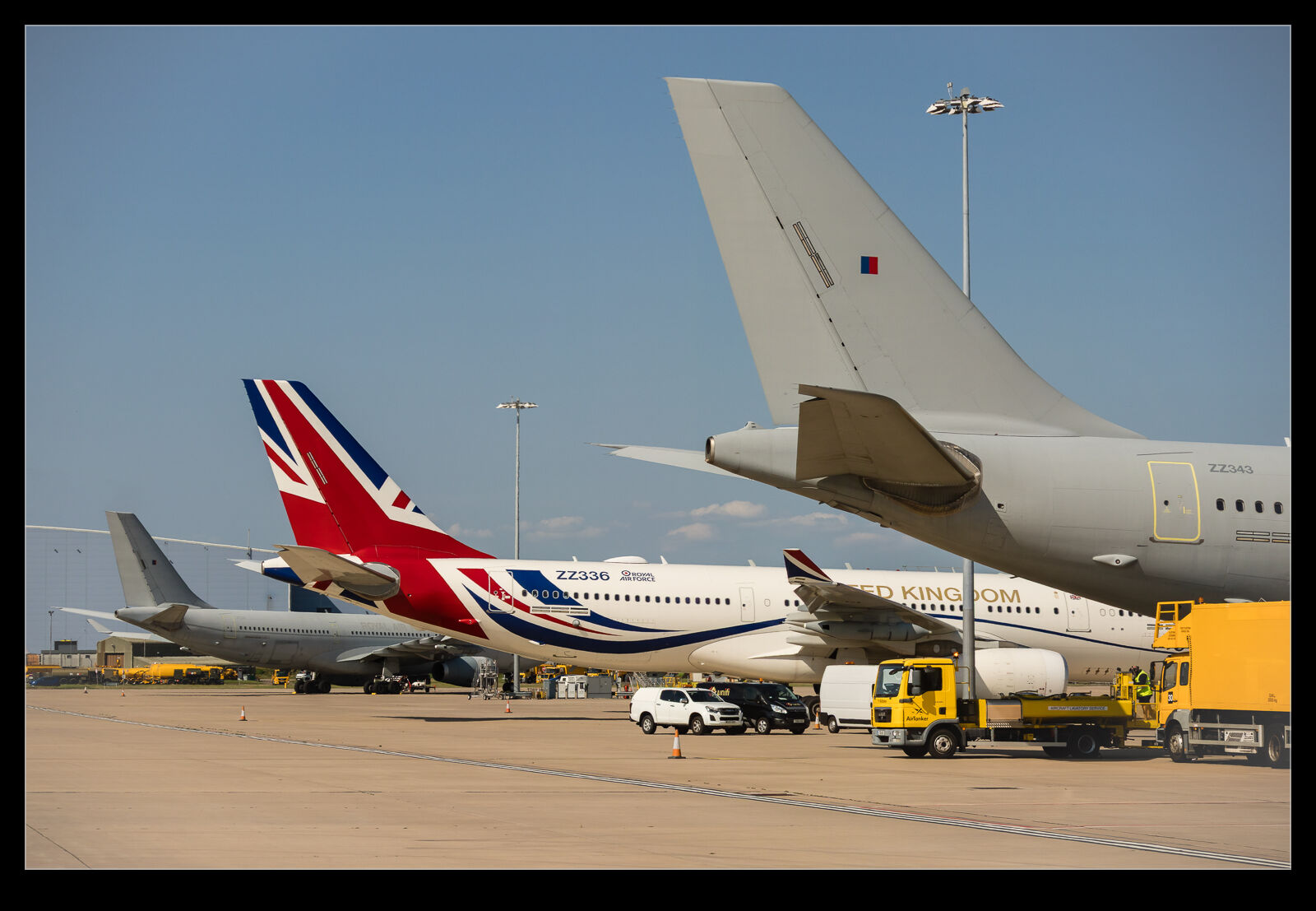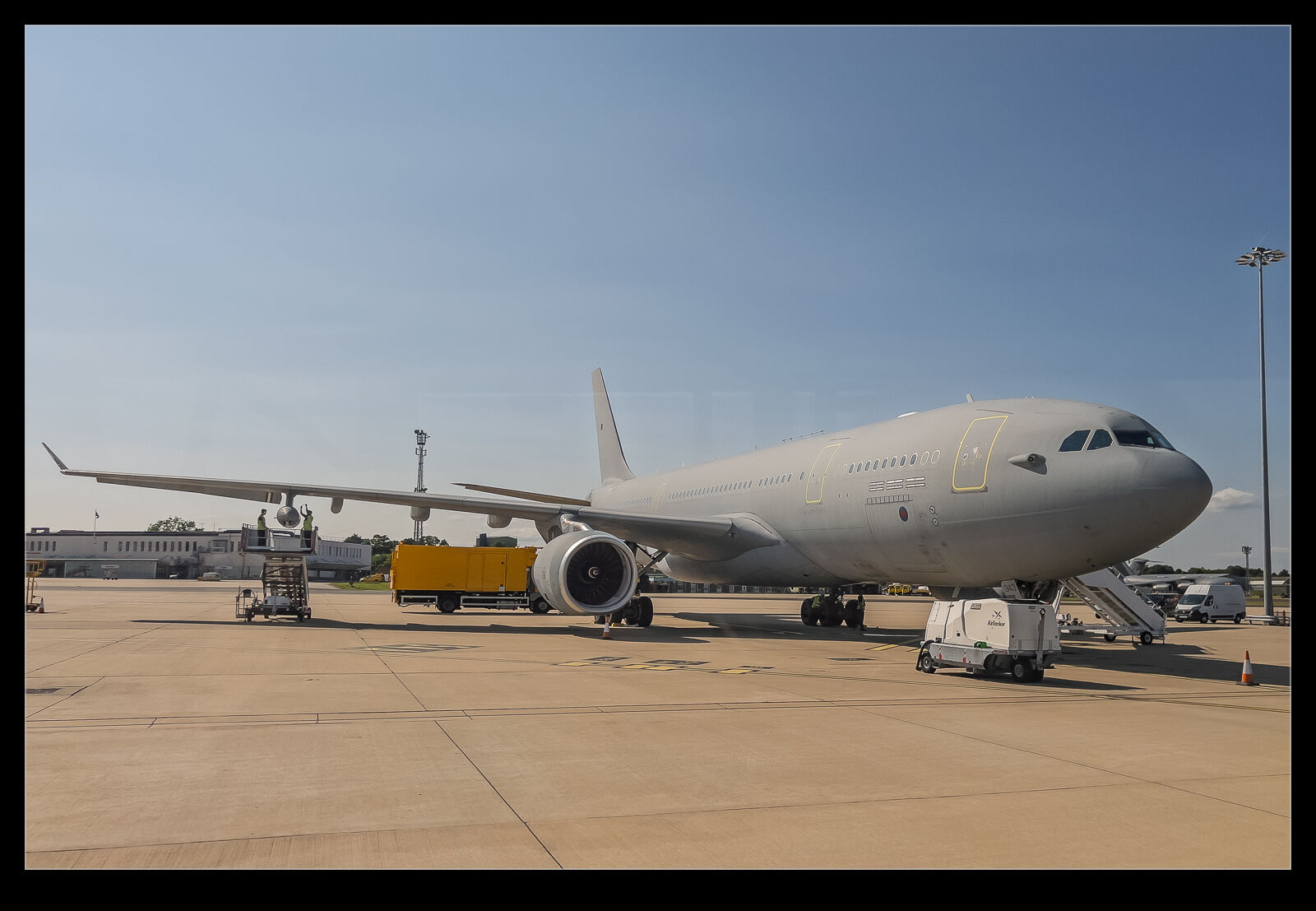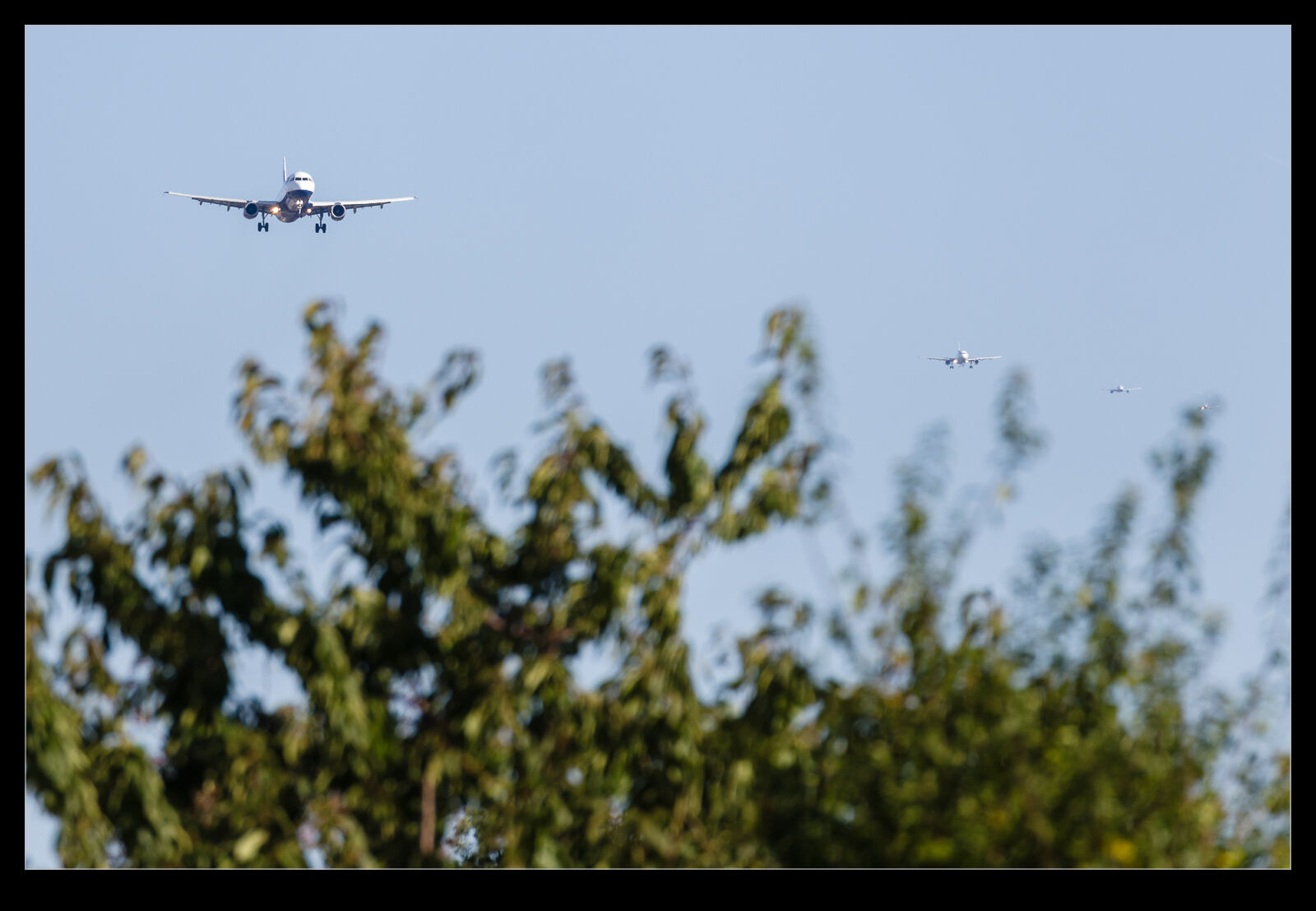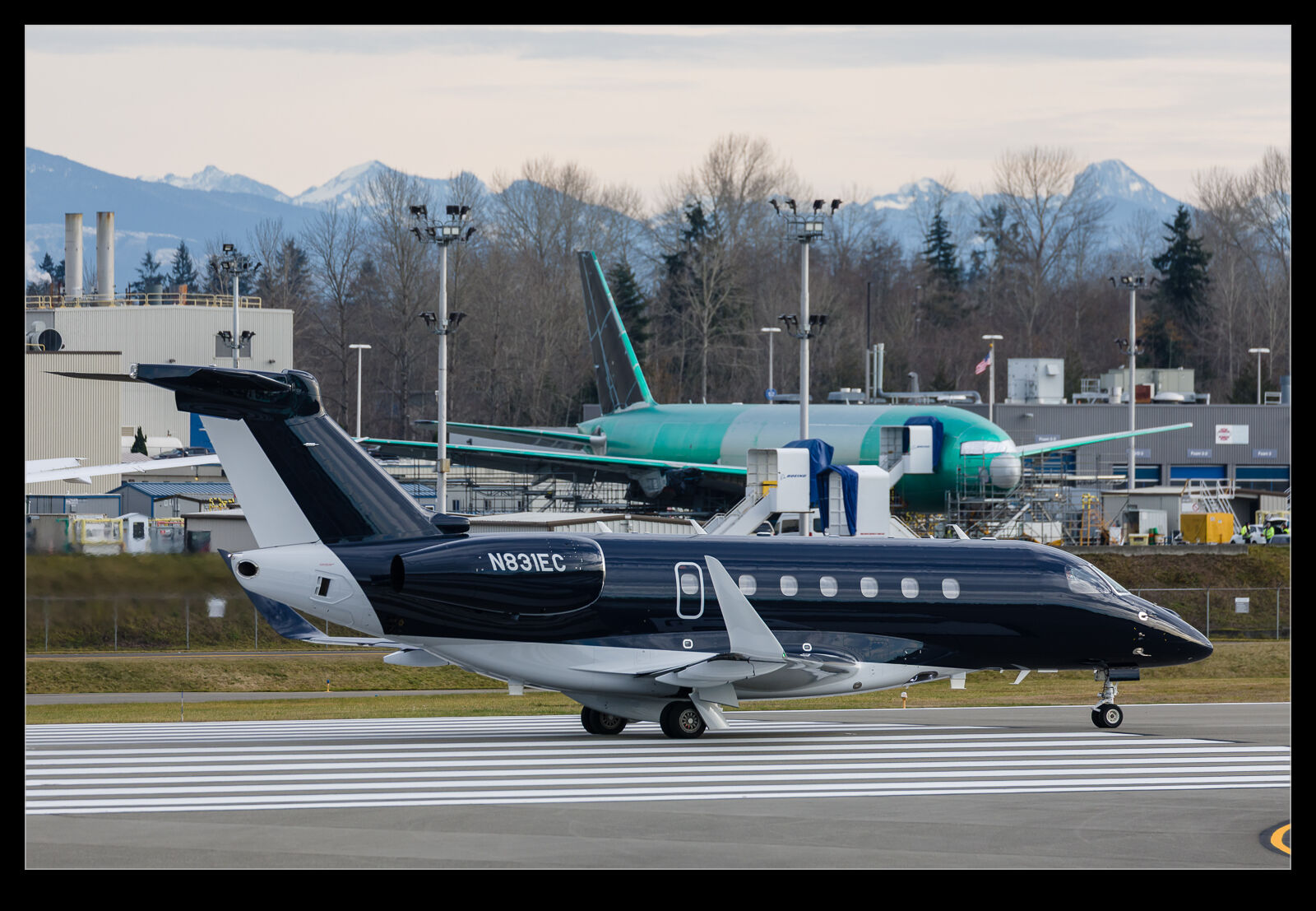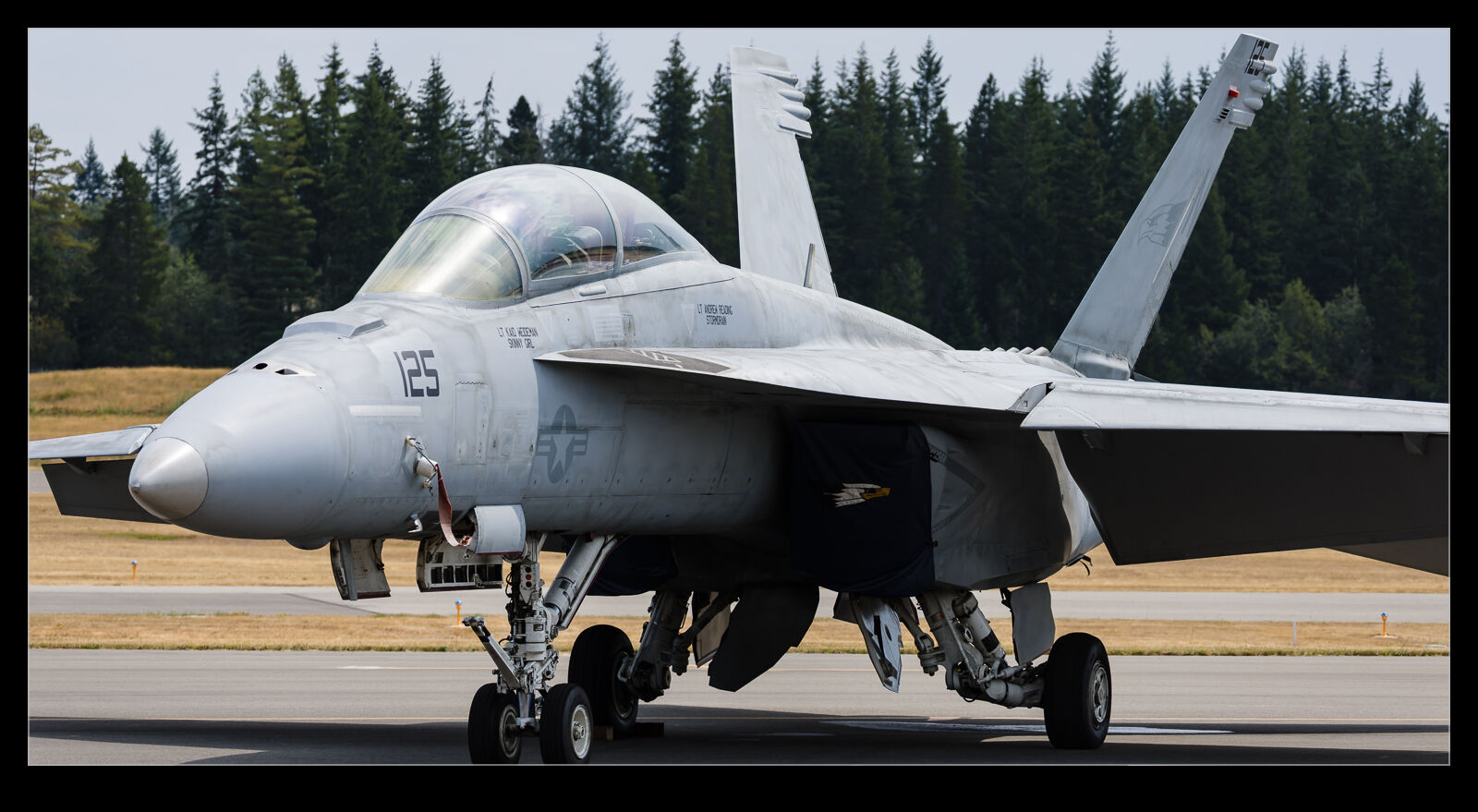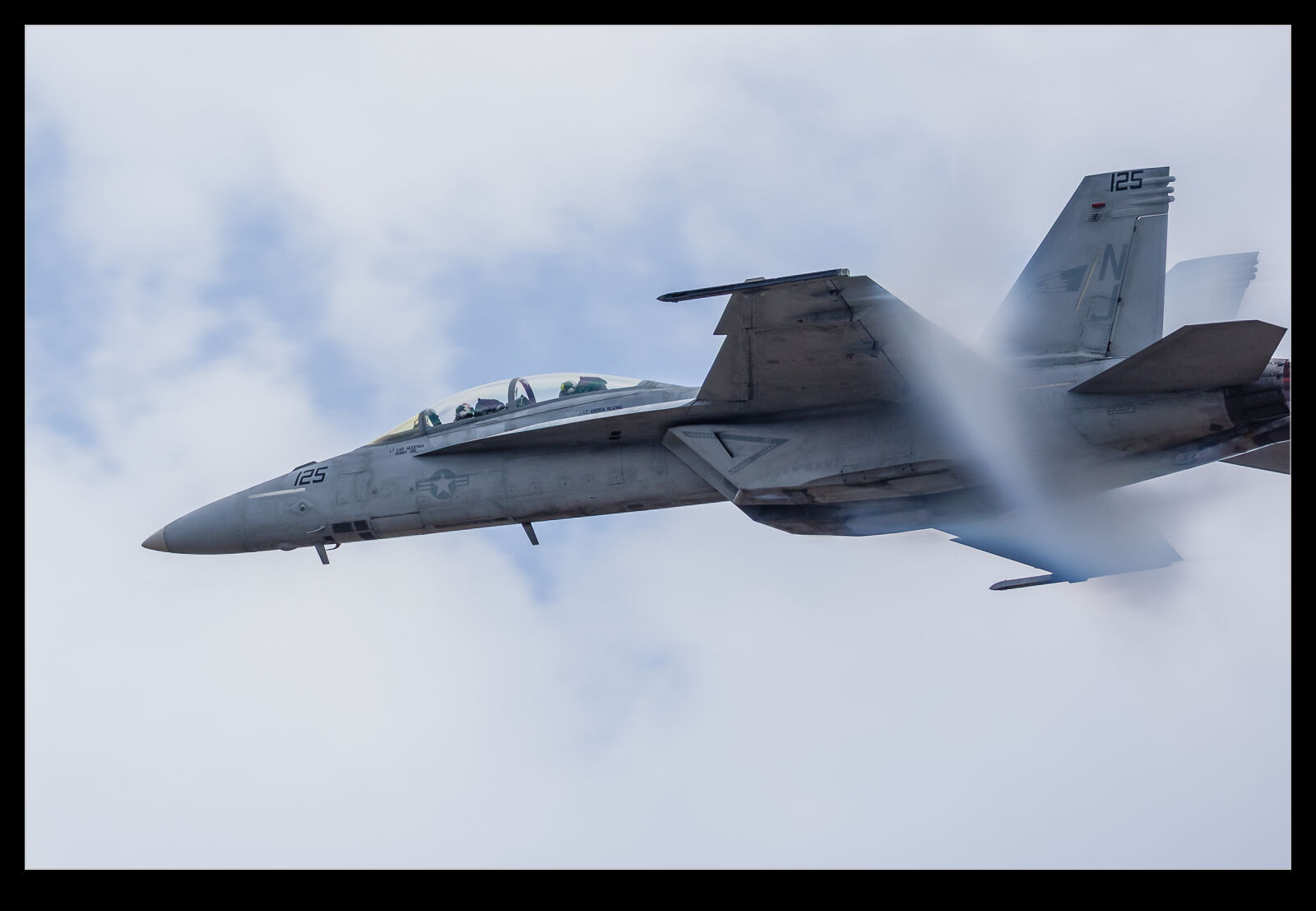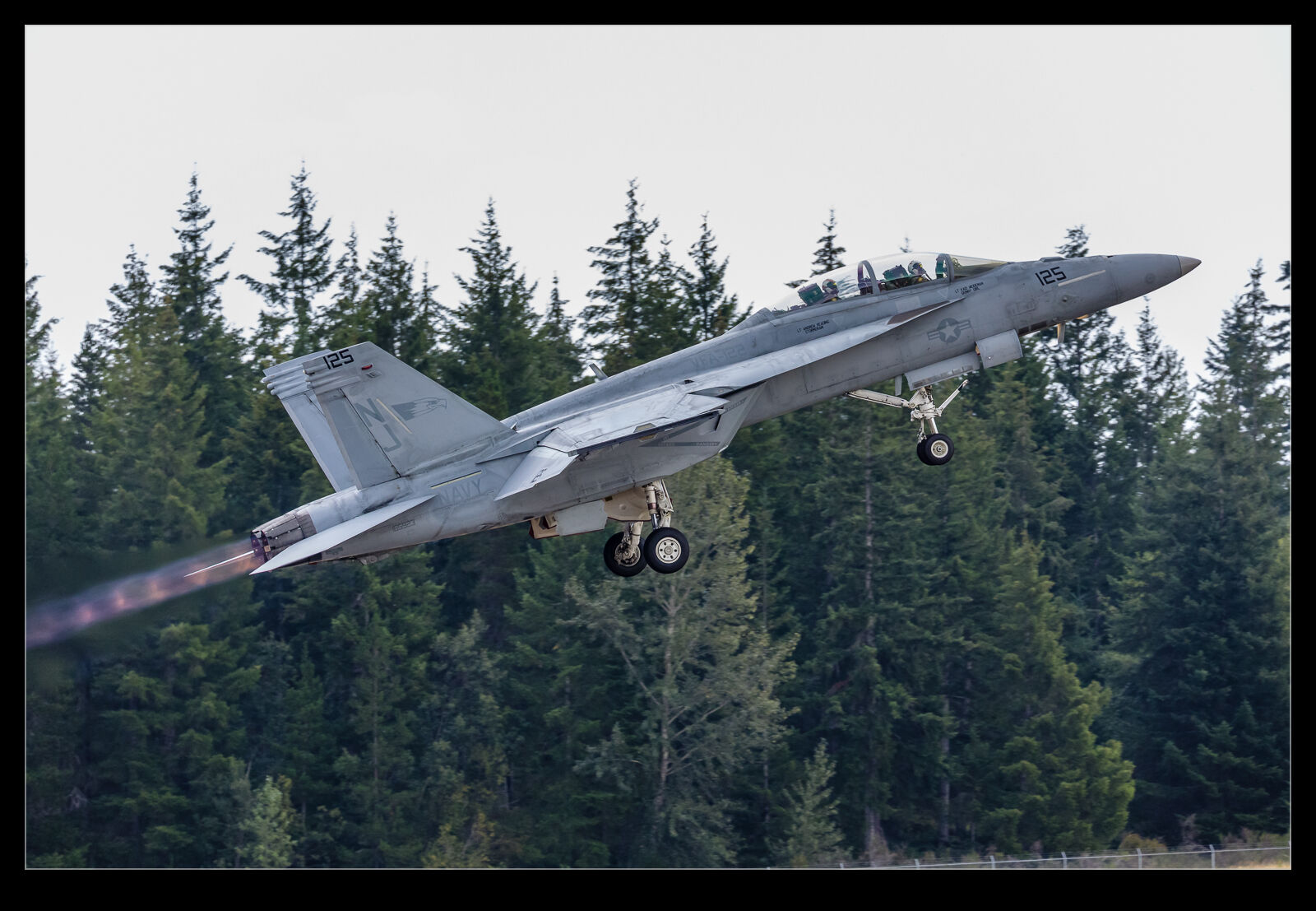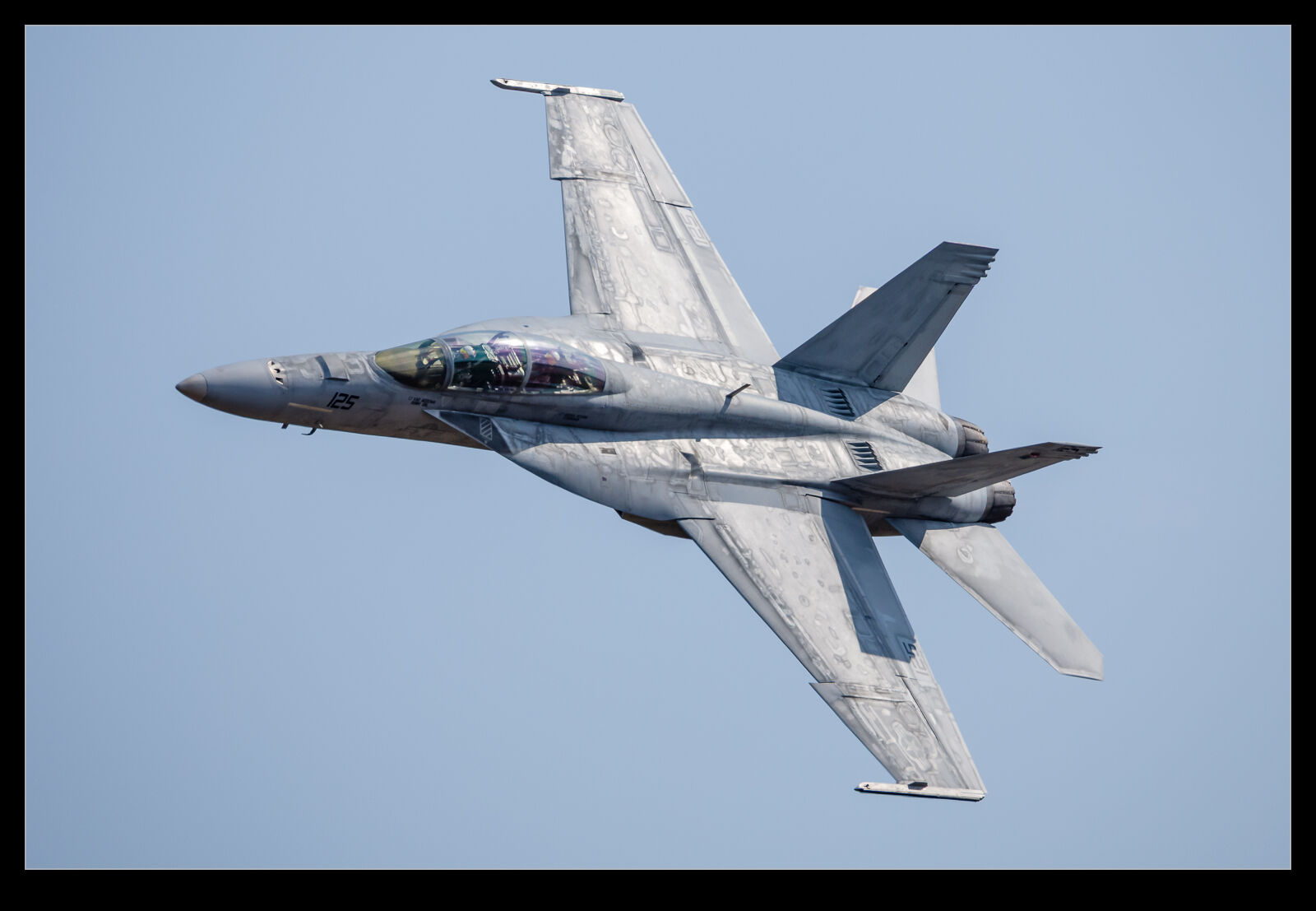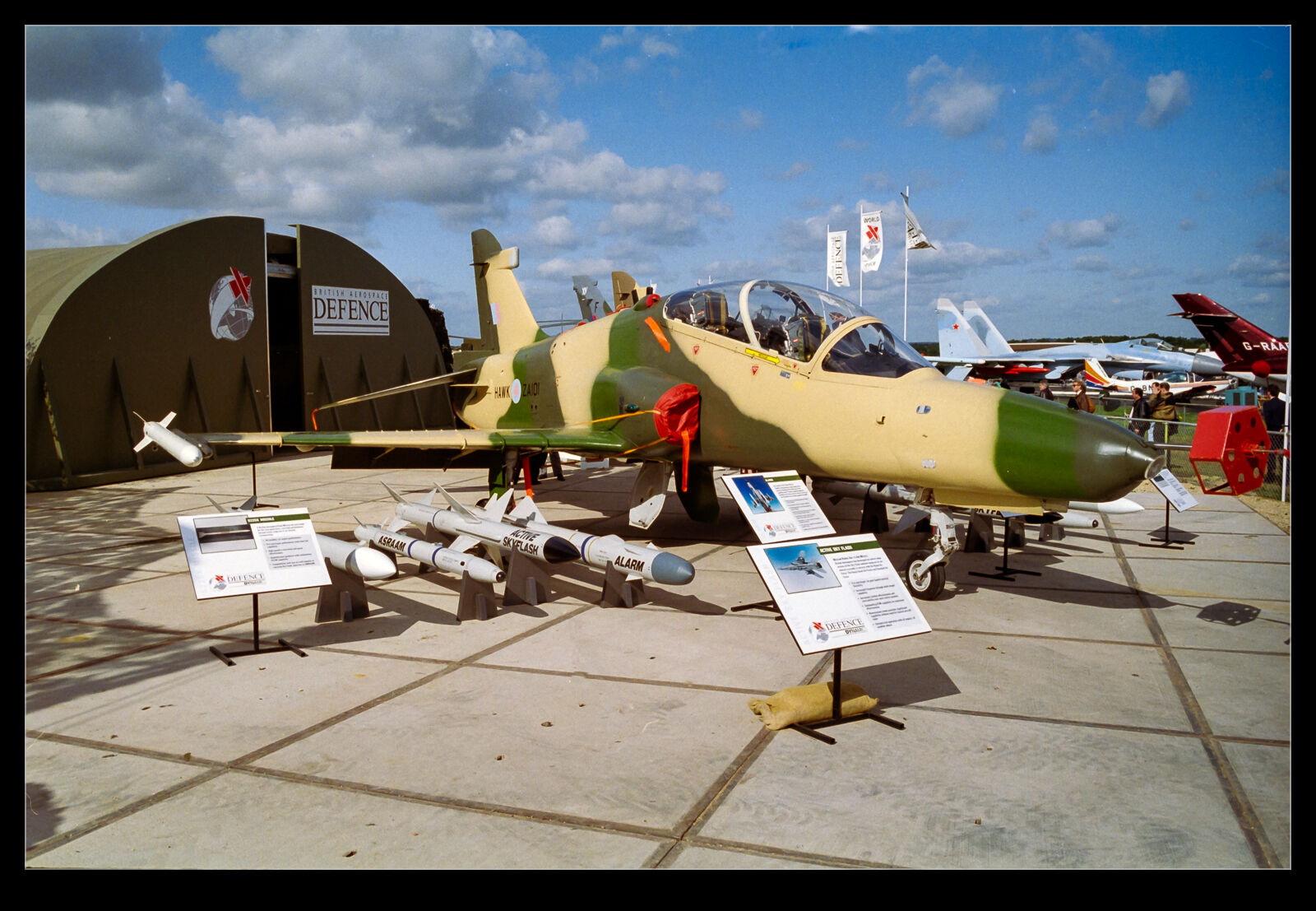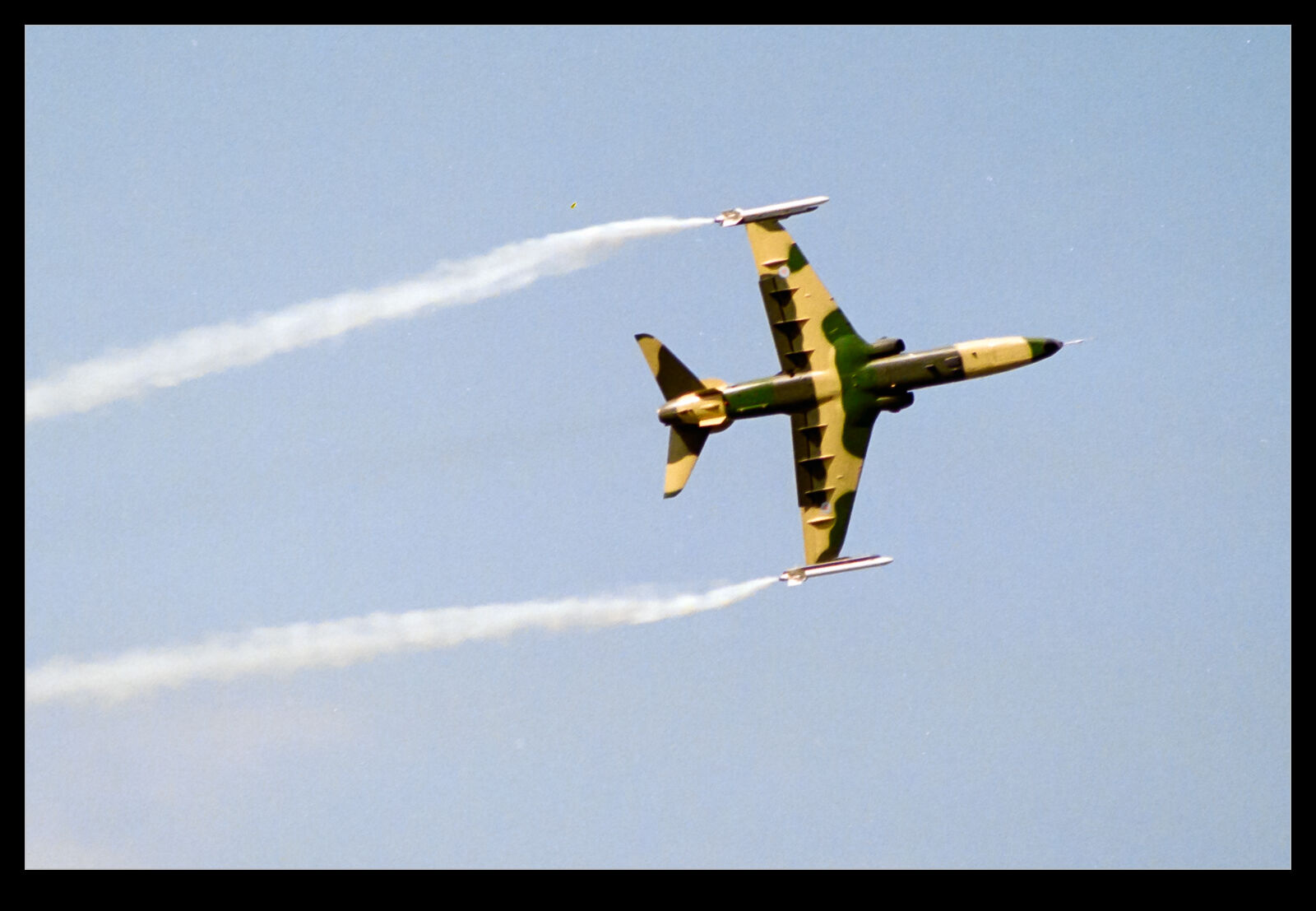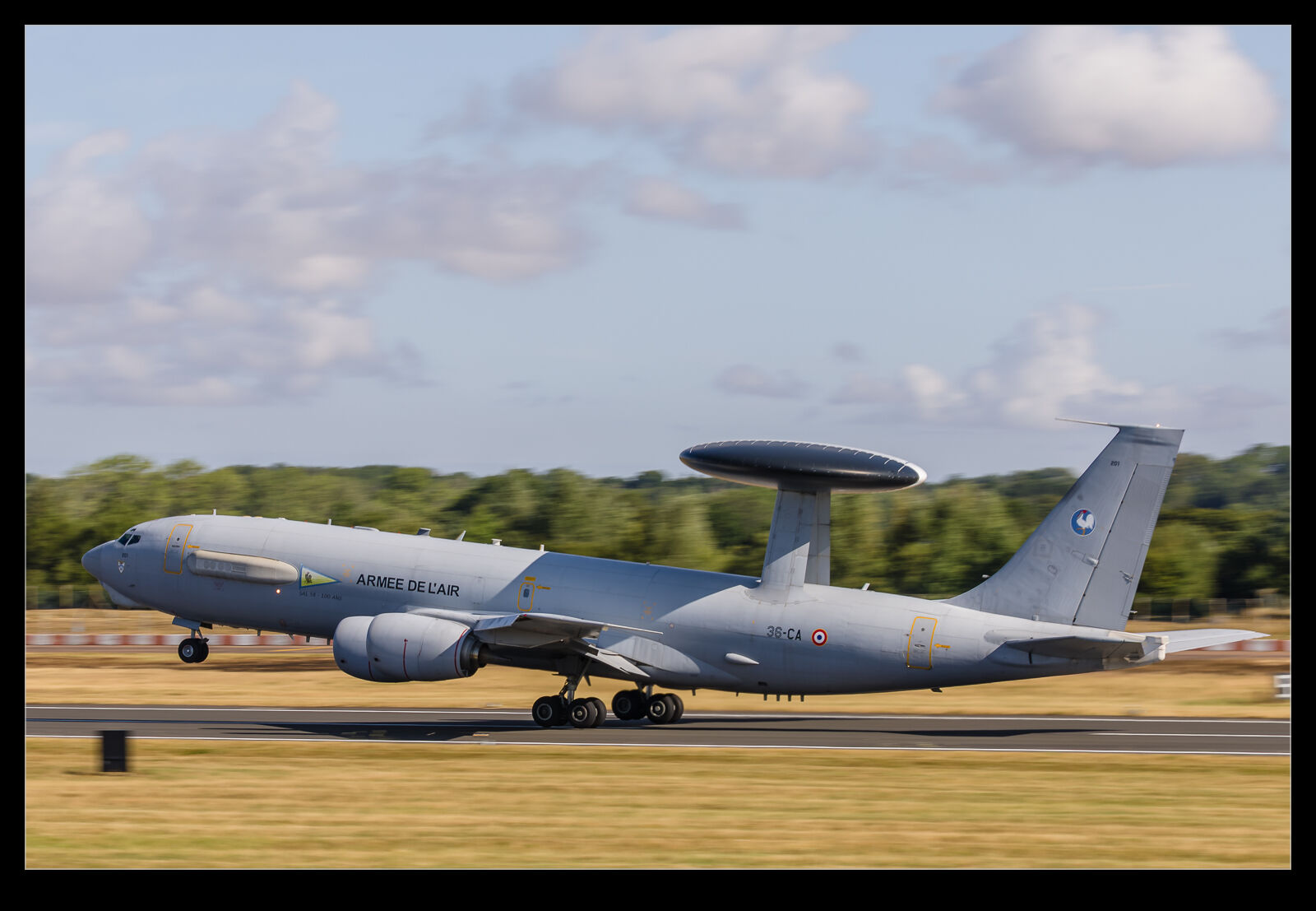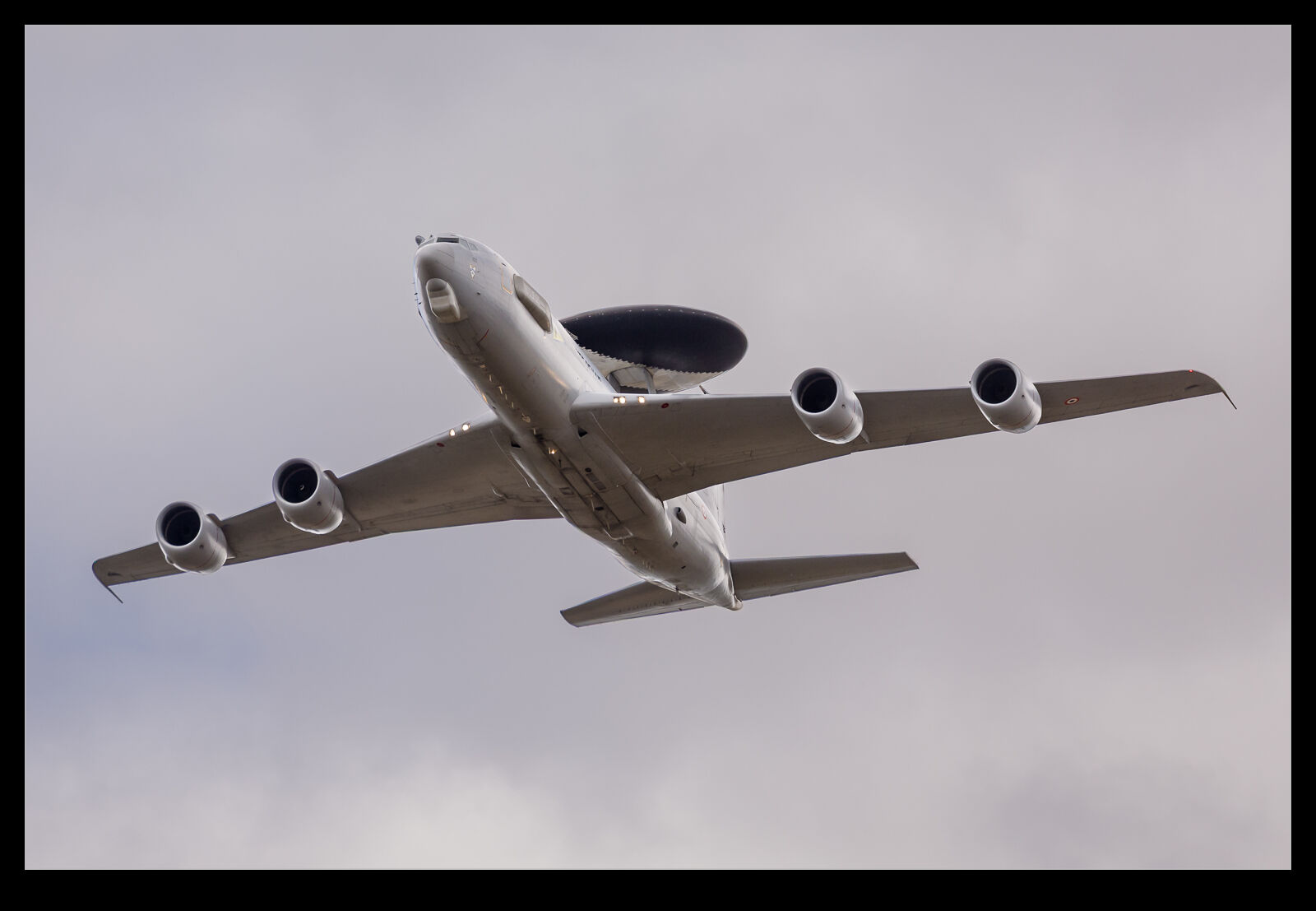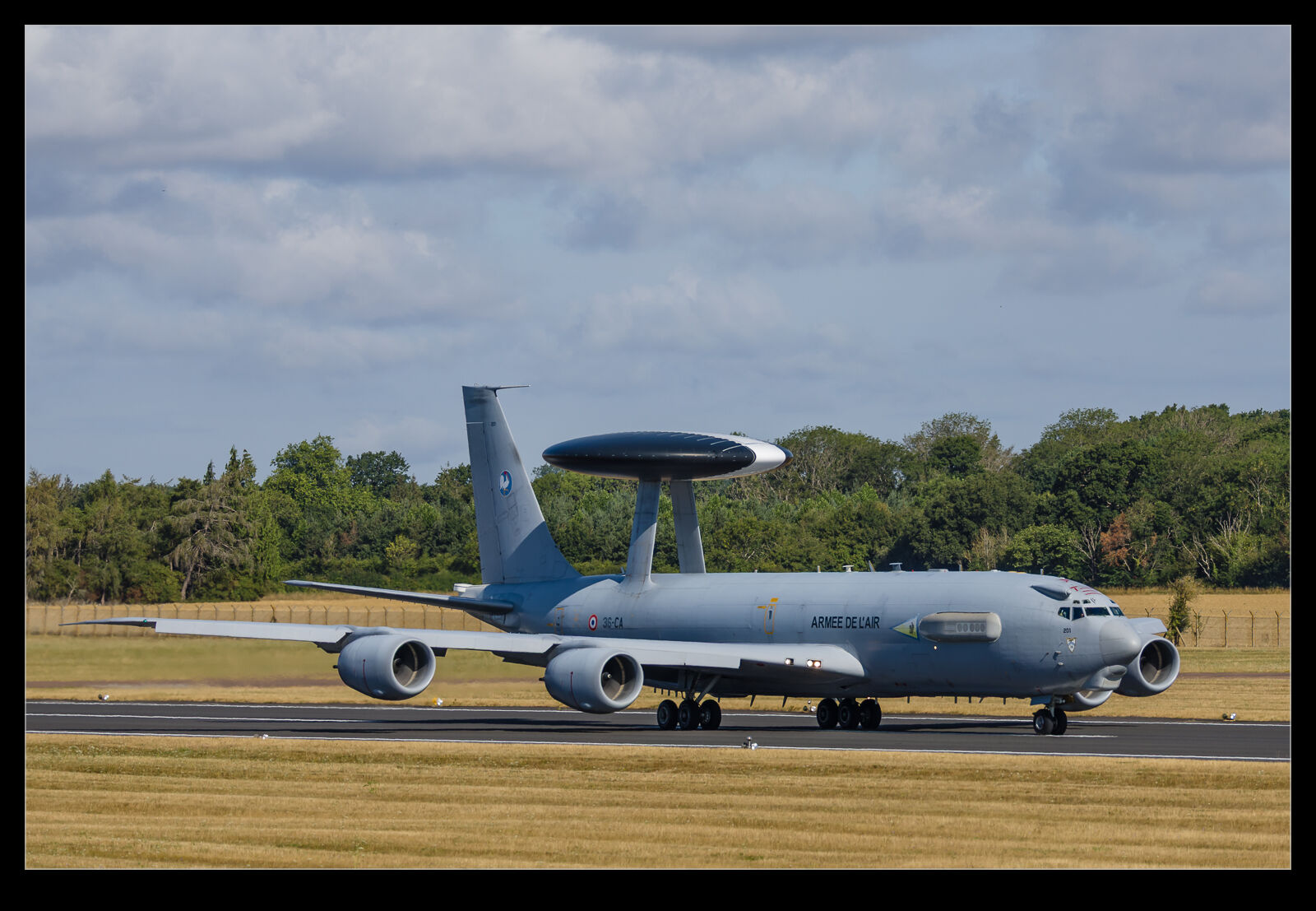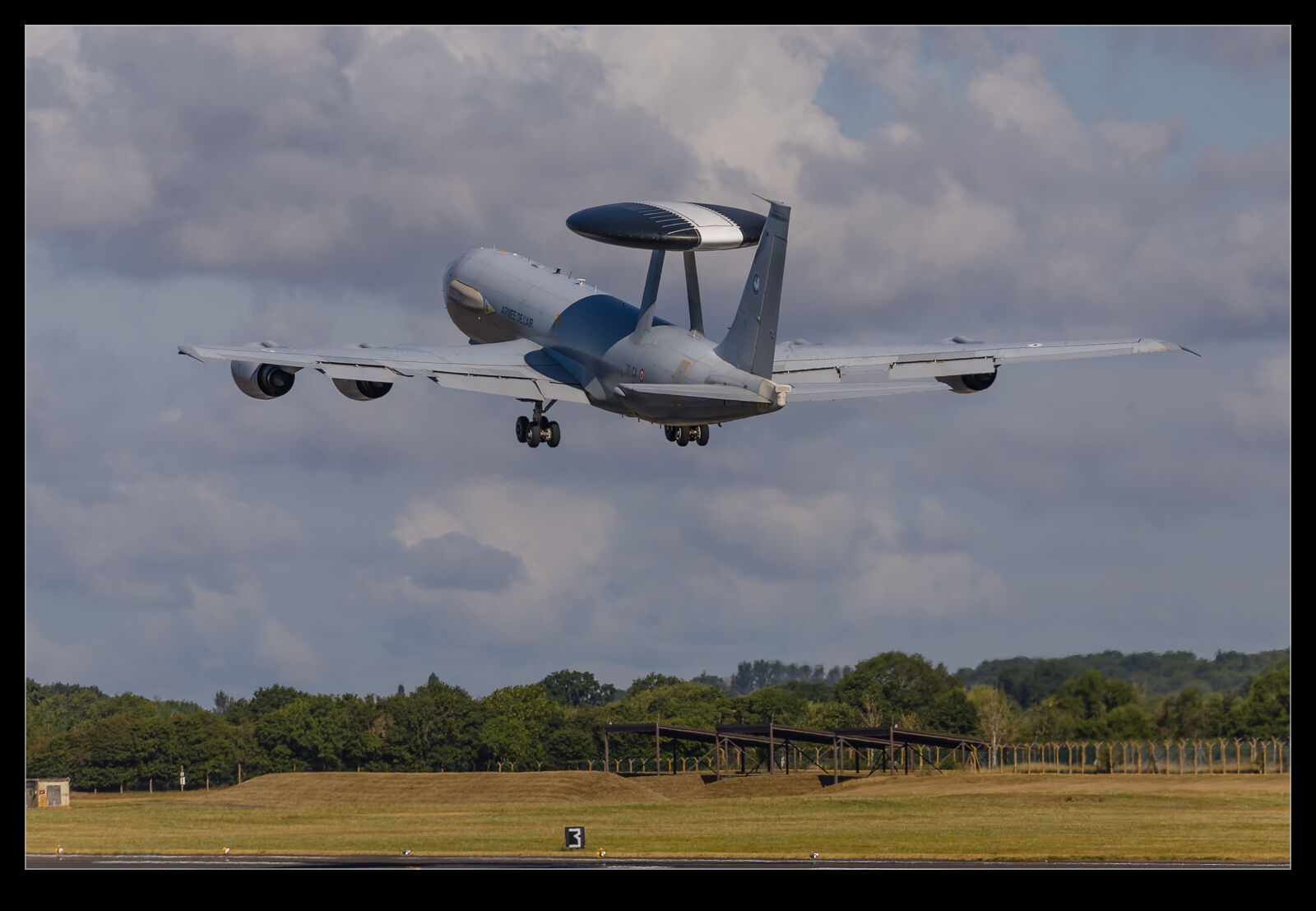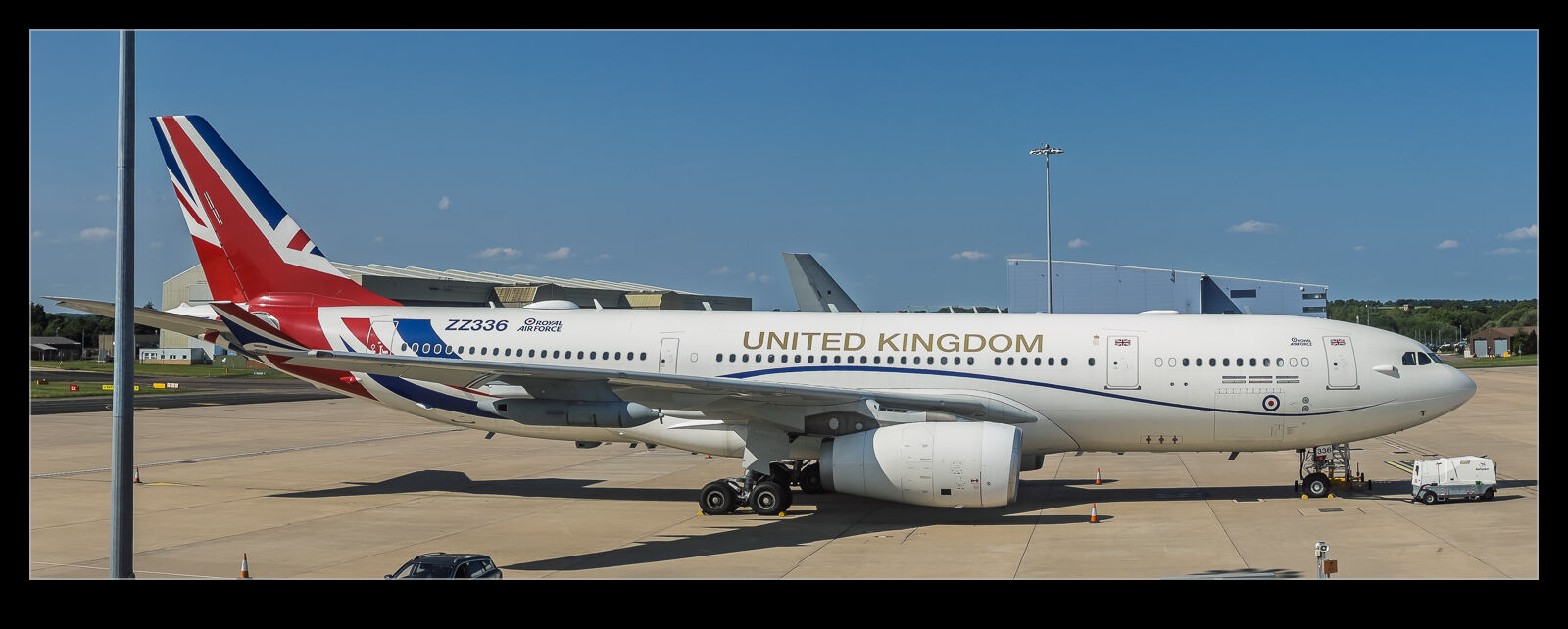 My Voyager ride with 101 Sqn ended back at Brize Norton and we pulled into the line with some other Voyagers. This included Vespina, the jet that is painted in national markings rather than the usual grey. We hung out on the ramp to get a group photo before heading back to the terminal. I got some shots of the Voyagers on the line while I was there (including the jet that we had just been in).
My Voyager ride with 101 Sqn ended back at Brize Norton and we pulled into the line with some other Voyagers. This included Vespina, the jet that is painted in national markings rather than the usual grey. We hung out on the ramp to get a group photo before heading back to the terminal. I got some shots of the Voyagers on the line while I was there (including the jet that we had just been in).
Tag Archives: jet
Sensors Versus Markings on the Gripen E
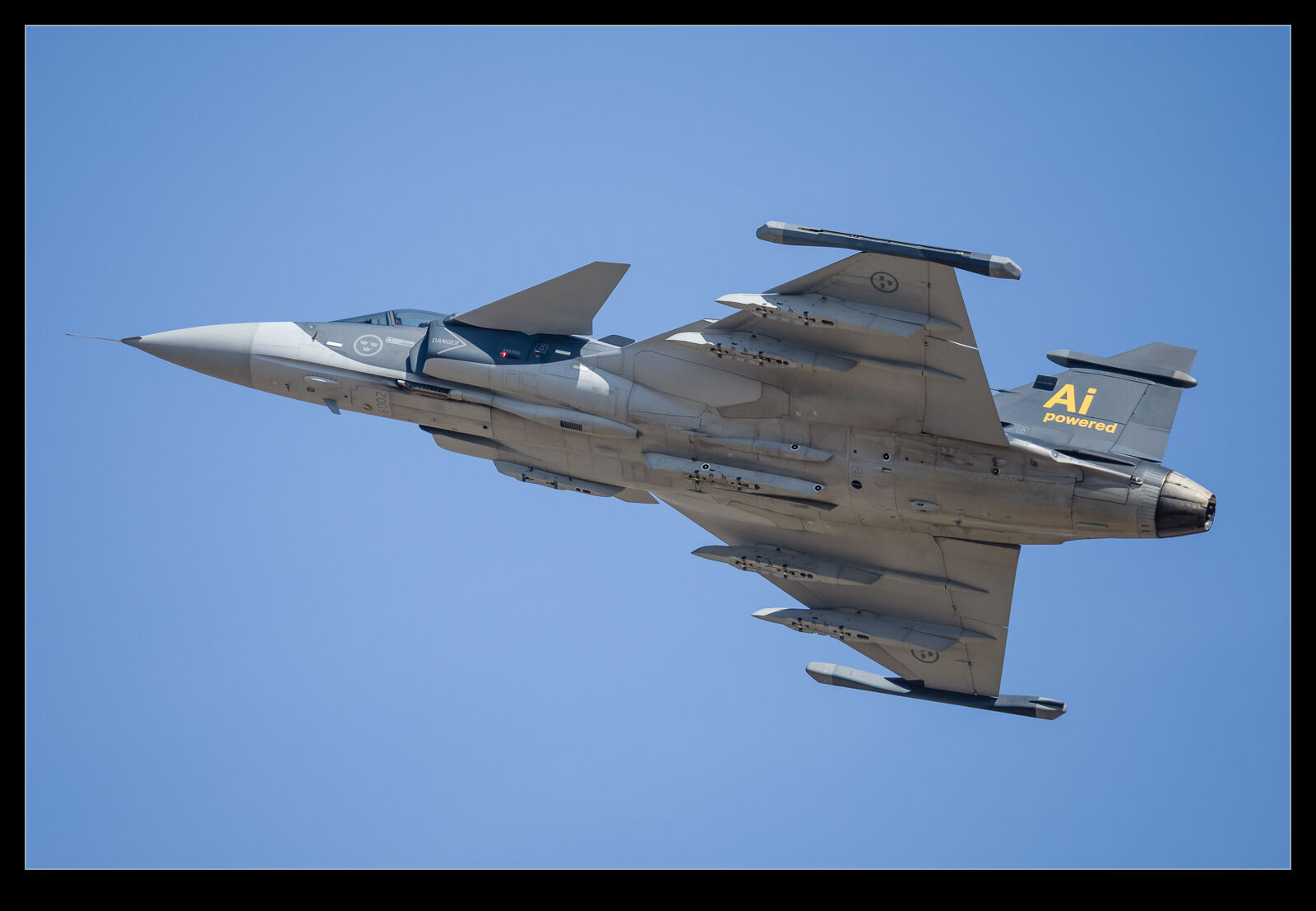 I was editing my images from RIAT recently and culling those that were never going to see the light of day. As I was working through the images of the Gripen E demonstrations, I noticed an array of sensors on the fuselage of the aircraft. There were also a bunch of markings that looked quite similar. The sensors seemed to have a specific shaping to the fuselage to align them with where they needed to face whilst the markings just seemed painted on to both the fuselage and the pylons. My assumption was that these were tracking locations for stores separation tests, but they were different to what I have seen used for this previously. I can’t tell for sure whether one is designed to distract you from the other! I have no knowledge of the systems fitted to the Gripen and will have to do some research but once you see this array of sensors, you can’t help but notice them thereafter!
I was editing my images from RIAT recently and culling those that were never going to see the light of day. As I was working through the images of the Gripen E demonstrations, I noticed an array of sensors on the fuselage of the aircraft. There were also a bunch of markings that looked quite similar. The sensors seemed to have a specific shaping to the fuselage to align them with where they needed to face whilst the markings just seemed painted on to both the fuselage and the pylons. My assumption was that these were tracking locations for stores separation tests, but they were different to what I have seen used for this previously. I can’t tell for sure whether one is designed to distract you from the other! I have no knowledge of the systems fitted to the Gripen and will have to do some research but once you see this array of sensors, you can’t help but notice them thereafter!
The Approach Is Busy
 Back to a time earlier this year when I made a trip to Heathrow for a brief bit of shooting. Most of the time, I was offset from the approach path to get shots of the jet as they were on short final approach. However, I did walk along to the approach lights to get some head on shots. While there were more about getting a tight angle on the jets and some underside shots, it did also allow me to look back up the approach and see a number of jets on the glideslope or turning to line up. Heathrow is a busy place so there always seem to be jets on approach.
Back to a time earlier this year when I made a trip to Heathrow for a brief bit of shooting. Most of the time, I was offset from the approach path to get shots of the jet as they were on short final approach. However, I did walk along to the approach lights to get some head on shots. While there were more about getting a tight angle on the jets and some underside shots, it did also allow me to look back up the approach and see a number of jets on the glideslope or turning to line up. Heathrow is a busy place so there always seem to be jets on approach.
Black Jets Look Better
Taking a Chance With the T-38 Landing
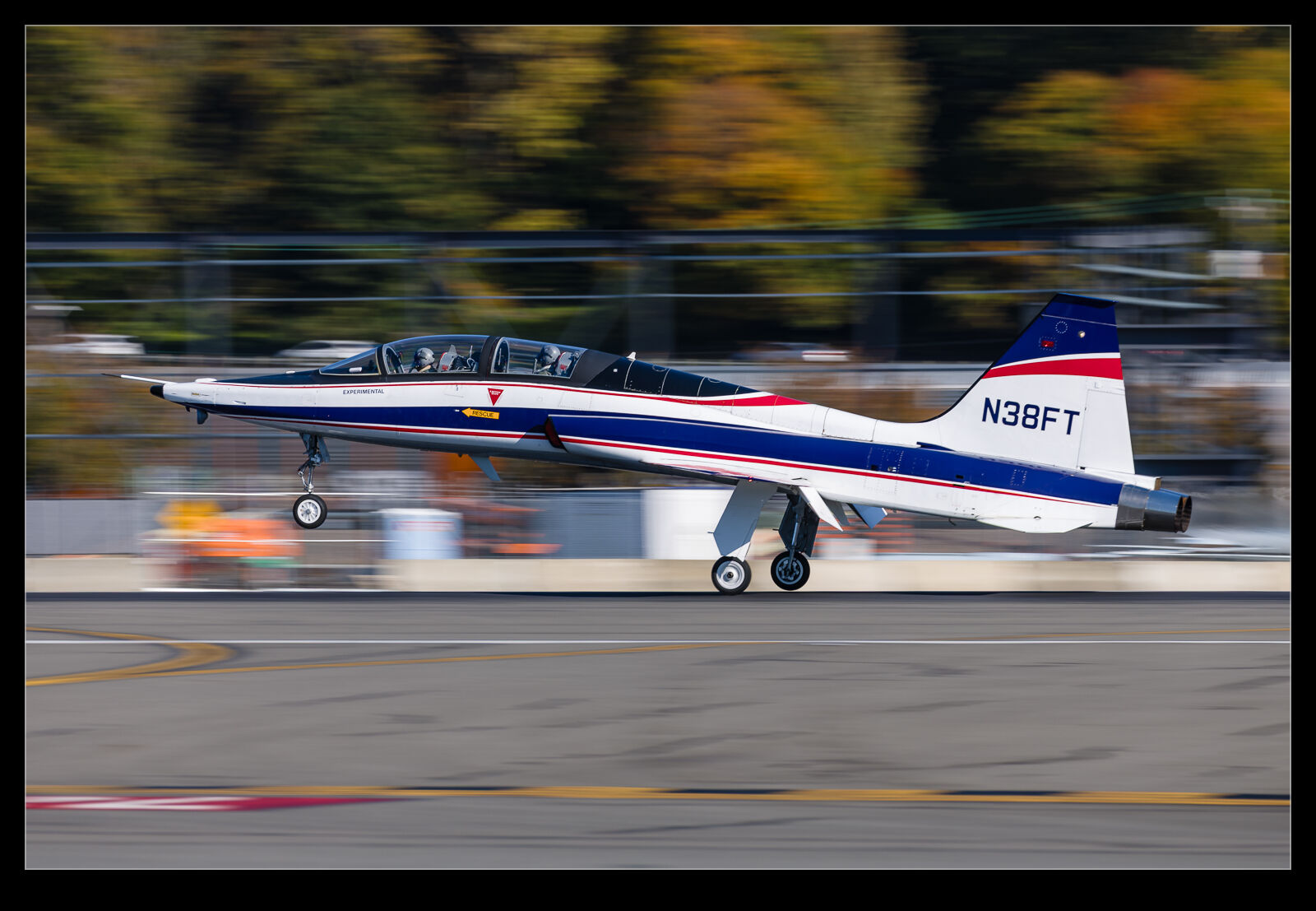 The T-38 chase planes that Boeing operates from Boeing Field did not fly as often as I would have liked. I’m sure they got plenty of use out of them, but it seemed to be a lucky break if one was up – particularly if I was in any place to see them. Consequently, I was always wondering whether I should make sure to get a sharp shot or take a chance on getting a more interesting look to the image. On this occasion, I decided to go with the latter. I dropped the shutter speed down to 1/100th of a second and hoped. A few came out okay. The cluttered background at Boeing Field is always a problem so a bit of blur helps put the focus on the plane.
The T-38 chase planes that Boeing operates from Boeing Field did not fly as often as I would have liked. I’m sure they got plenty of use out of them, but it seemed to be a lucky break if one was up – particularly if I was in any place to see them. Consequently, I was always wondering whether I should make sure to get a sharp shot or take a chance on getting a more interesting look to the image. On this occasion, I decided to go with the latter. I dropped the shutter speed down to 1/100th of a second and hoped. A few came out okay. The cluttered background at Boeing Field is always a problem so a bit of blur helps put the focus on the plane.
Super Bugs at Bremerton
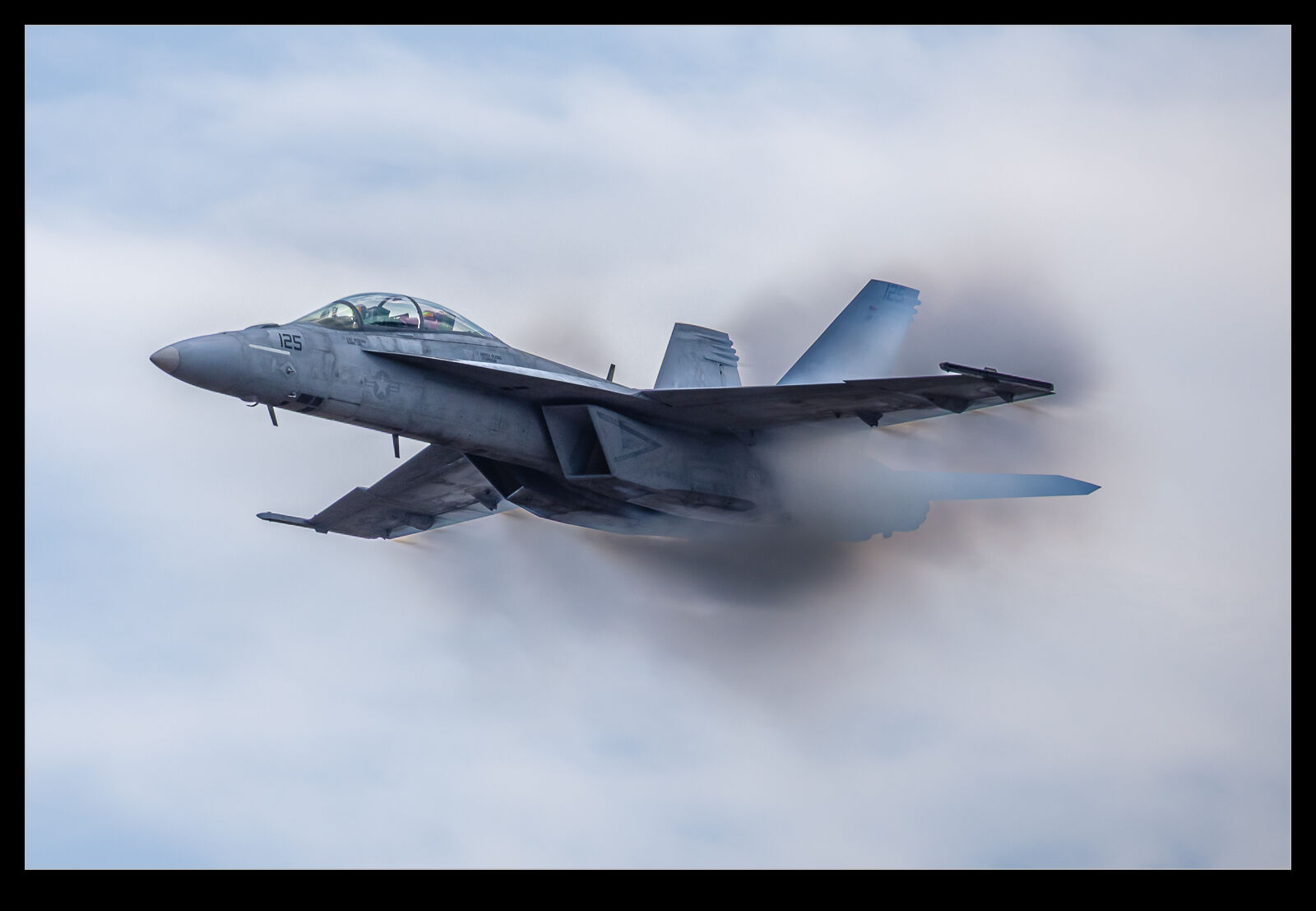 One of the last air shows I attended before we left the Pacific Northwest was at Bremerton. The unusual thing about this air show was that I didn’t head there alone. Instead, Nancy came along with me. It is a long time since she last came to a show with me, but the good news was that she enjoyed it! One of the parts of the show that she found the best was the US Navy’s Super Hornet display. They ripped up the sky for a while. Their blast across the field from crowd rear particularly amused her!
One of the last air shows I attended before we left the Pacific Northwest was at Bremerton. The unusual thing about this air show was that I didn’t head there alone. Instead, Nancy came along with me. It is a long time since she last came to a show with me, but the good news was that she enjoyed it! One of the parts of the show that she found the best was the US Navy’s Super Hornet display. They ripped up the sky for a while. Their blast across the field from crowd rear particularly amused her!
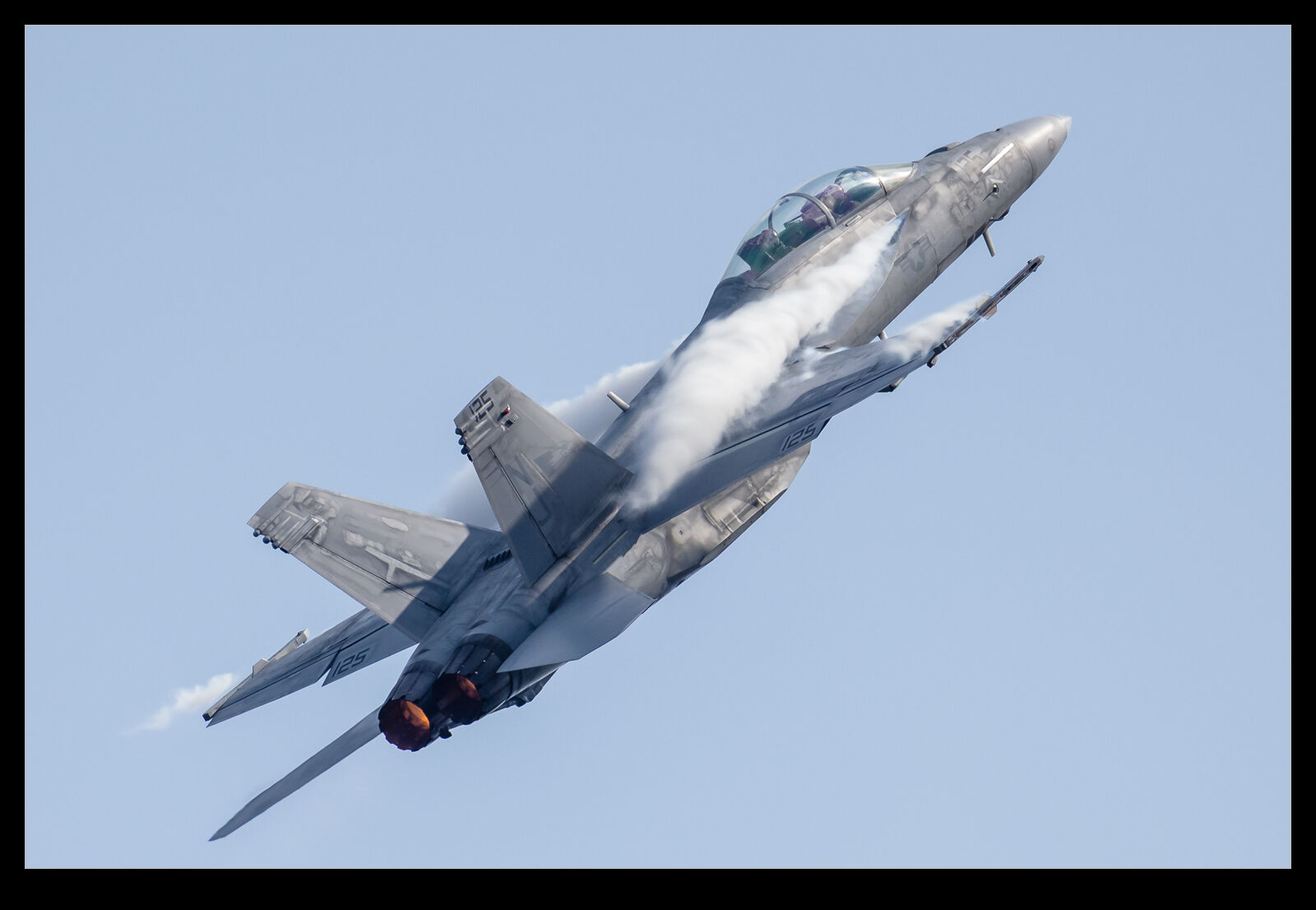 The conditions not ideal from a lighting point of view but there was humidity in the air with the upside that the jet was created plenty of spluff. One of the passes in particular created a lot of cloud activity. It made for a difficult image to process given the contrast with the cloudy background and that its own clouds needed not to be over exposed. I suspect I shall probably try reprocessing this again in the future as either my techniques improve, or the software gets more advanced. I did have a bit too much lens for the closest part of the pass – oh well…
The conditions not ideal from a lighting point of view but there was humidity in the air with the upside that the jet was created plenty of spluff. One of the passes in particular created a lot of cloud activity. It made for a difficult image to process given the contrast with the cloudy background and that its own clouds needed not to be over exposed. I suspect I shall probably try reprocessing this again in the future as either my techniques improve, or the software gets more advanced. I did have a bit too much lens for the closest part of the pass – oh well…
Stormy Sunday Atlas 777F
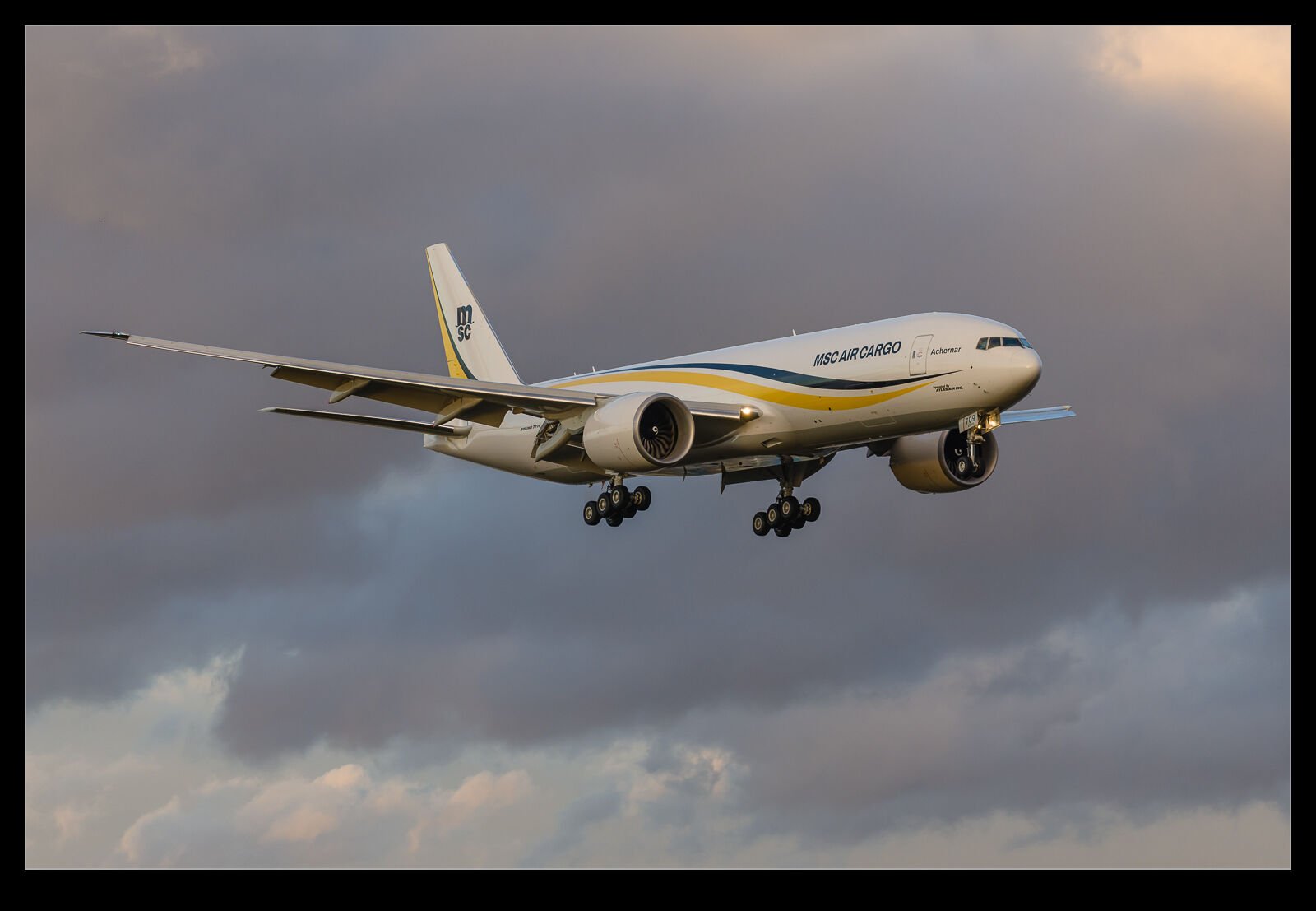 A stormy sky doesn’t immediately inspire you when going for some aircraft photography but, if the light on the subject can end up being okay, a dark background can suddenly seem like a great option. One Sunday an Atlas 777F was up on test at Paine Field. The sky was dark and gloomy but not a solid cloud background. Instead, the clouds were stratified so there was more detail and texture to see.
A stormy sky doesn’t immediately inspire you when going for some aircraft photography but, if the light on the subject can end up being okay, a dark background can suddenly seem like a great option. One Sunday an Atlas 777F was up on test at Paine Field. The sky was dark and gloomy but not a solid cloud background. Instead, the clouds were stratified so there was more detail and texture to see.
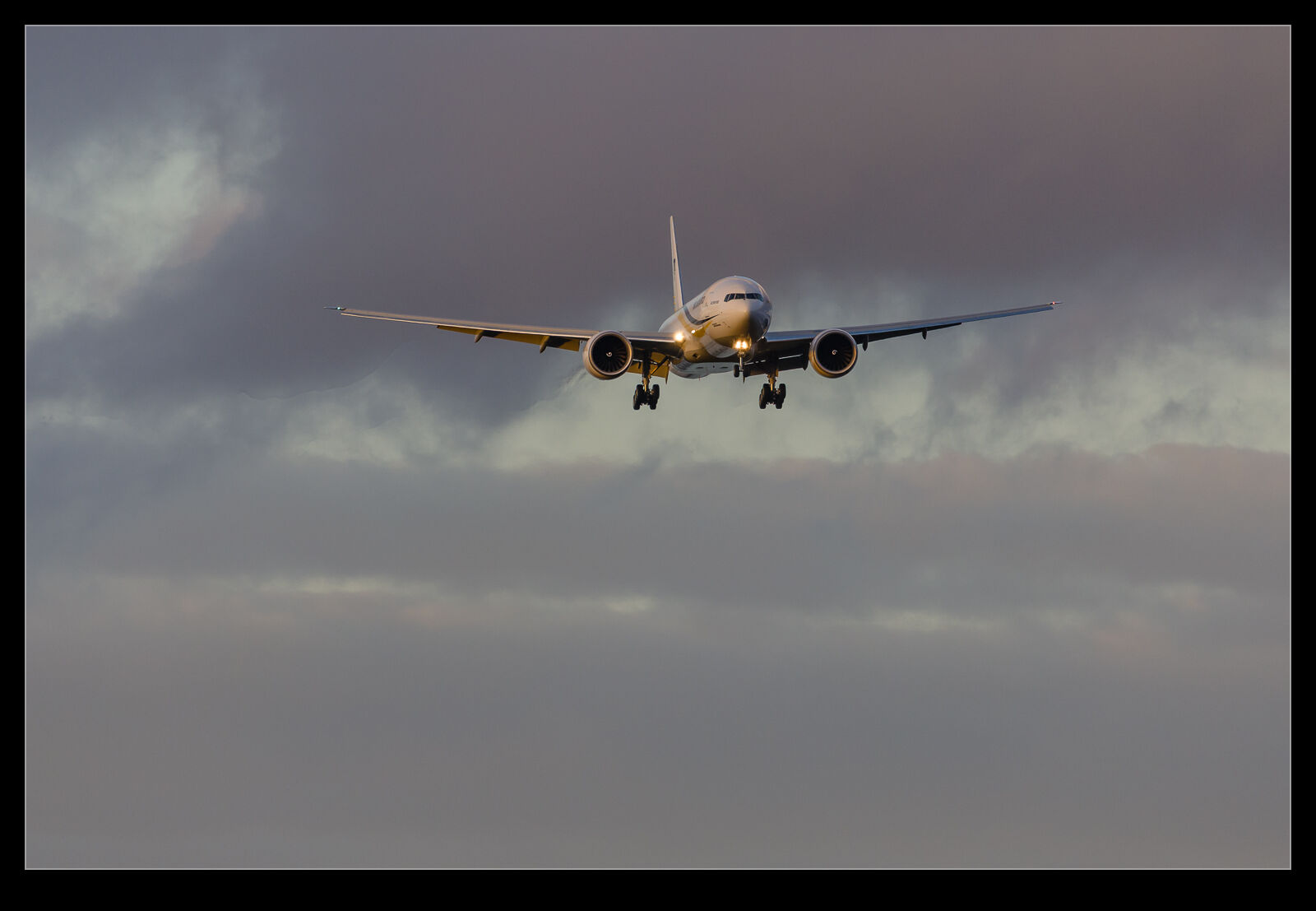 As the 777 came down the approach, it was not brightly illuminated but it was picking up a good amount of light compared to what I had expected to be the case. This did require some thought about the camera settings. When the sky is dark, I often significantly over-expose. This is because the clouds will dominate the metering response and the subject – which is usually quite dark – really disappears. In post processing I can then bring the exposure back down but there is sufficient light on the subject to get a good image of it against the sky.
As the 777 came down the approach, it was not brightly illuminated but it was picking up a good amount of light compared to what I had expected to be the case. This did require some thought about the camera settings. When the sky is dark, I often significantly over-expose. This is because the clouds will dominate the metering response and the subject – which is usually quite dark – really disappears. In post processing I can then bring the exposure back down but there is sufficient light on the subject to get a good image of it against the sky.
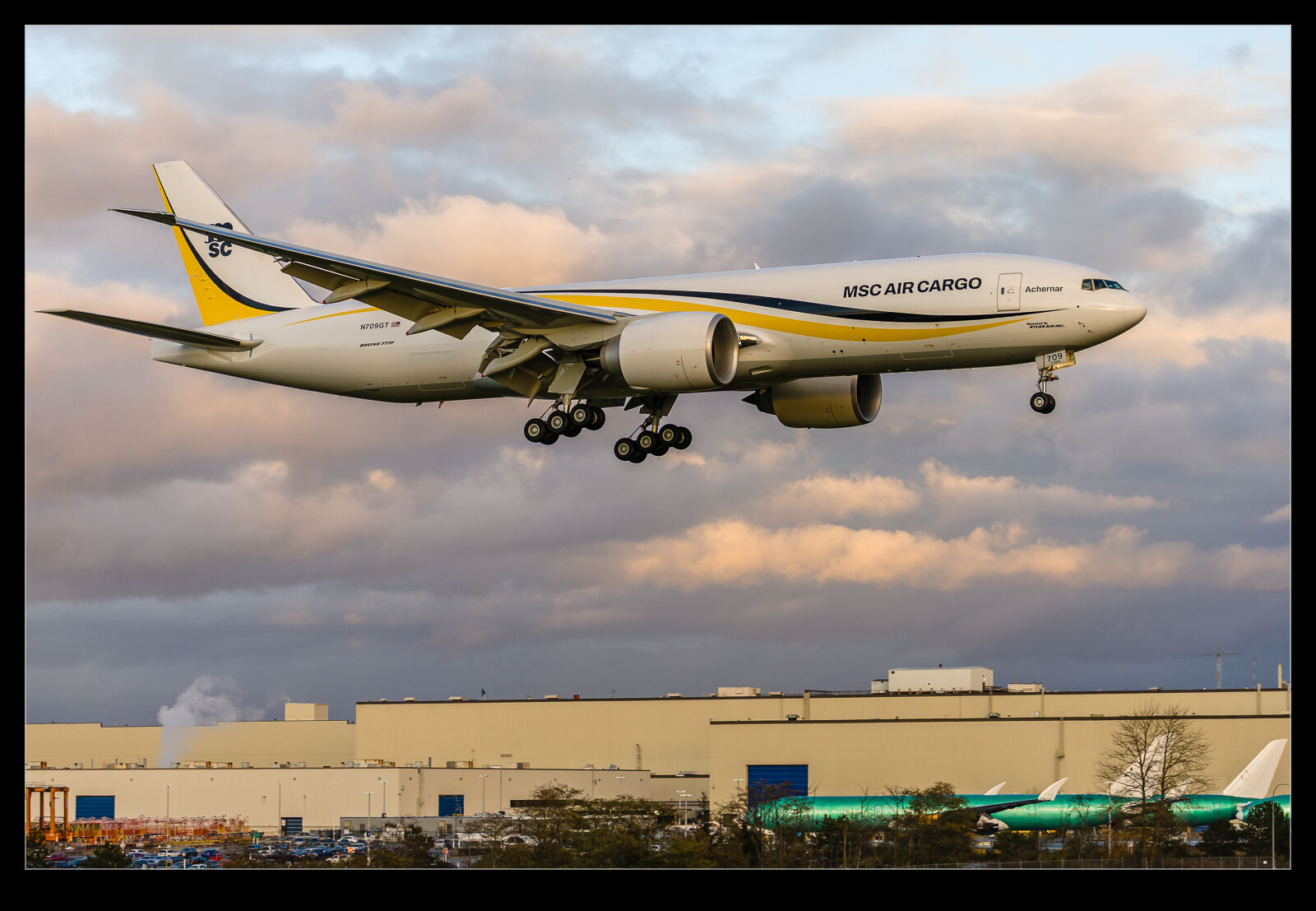 In this case, I had to be more careful. With good light on the subject, the dark sky would result in blowing out the plane. Therefore, I had to keep the exposure compensation off to allow the subject to not get too overexposed and not leave enough latitude for processing it to where I wanted it to be. The results came out okay. This was more important for the longer shots. Once the plane was close in, it started to dominate the metering response and, once on the ground, the illumination was more balanced.
In this case, I had to be more careful. With good light on the subject, the dark sky would result in blowing out the plane. Therefore, I had to keep the exposure compensation off to allow the subject to not get too overexposed and not leave enough latitude for processing it to where I wanted it to be. The results came out okay. This was more important for the longer shots. Once the plane was close in, it started to dominate the metering response and, once on the ground, the illumination was more balanced.
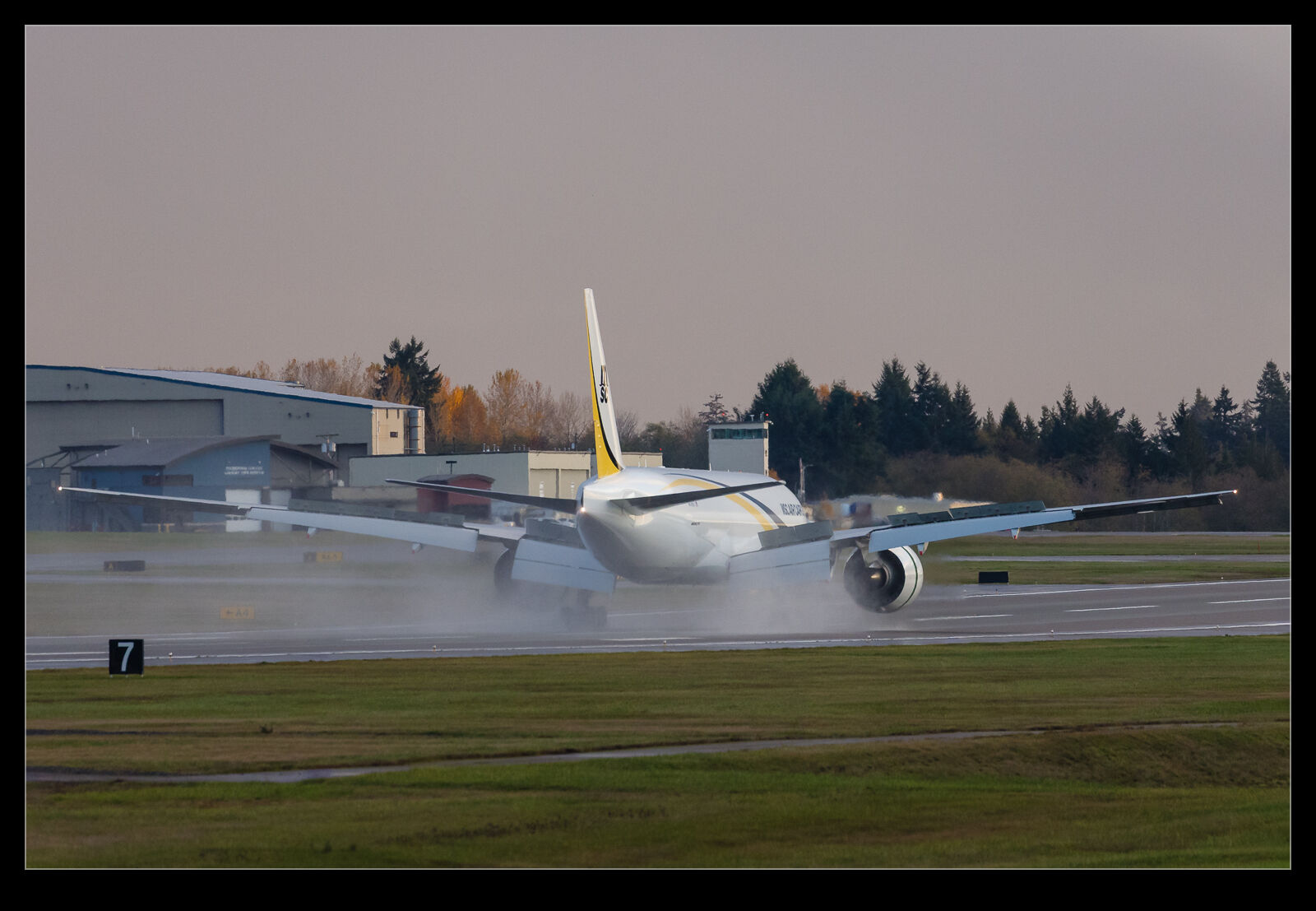 Once they touched down and brought in the reversers, you could see that the conditions had not long ago been wet as the runway still had plenty of water on the surface and the reversers kicked it up in the air.
Once they touched down and brought in the reversers, you could see that the conditions had not long ago been wet as the runway still had plenty of water on the surface and the reversers kicked it up in the air.
The History of Harriers in One Place
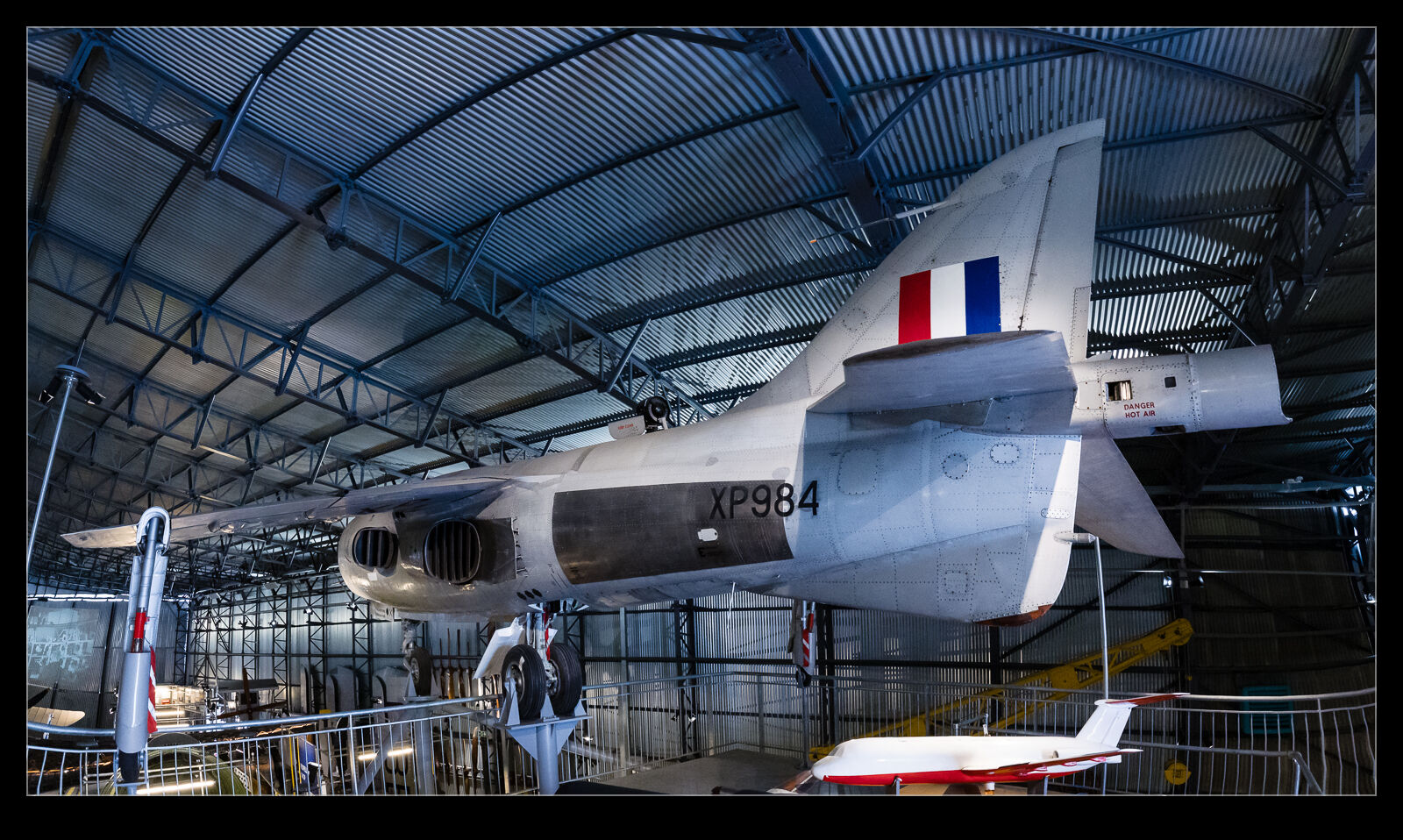 The Brooklands Museum might be located in the home of Vickers and include a lot of Vickers exhibits, but it also has some Hawker products too. I might be slightly exaggerating about the full history of Harriers, but they have three different examples of the Harrier lineage on display. The first is actually a Harrier but a P1127. The original demonstrator that led to the Kestrel and ultimately the Harrier. The design philosophy is clearly the same, but this was the beginning of the journey for the Kingston design team.
The Brooklands Museum might be located in the home of Vickers and include a lot of Vickers exhibits, but it also has some Hawker products too. I might be slightly exaggerating about the full history of Harriers, but they have three different examples of the Harrier lineage on display. The first is actually a Harrier but a P1127. The original demonstrator that led to the Kestrel and ultimately the Harrier. The design philosophy is clearly the same, but this was the beginning of the journey for the Kingston design team.
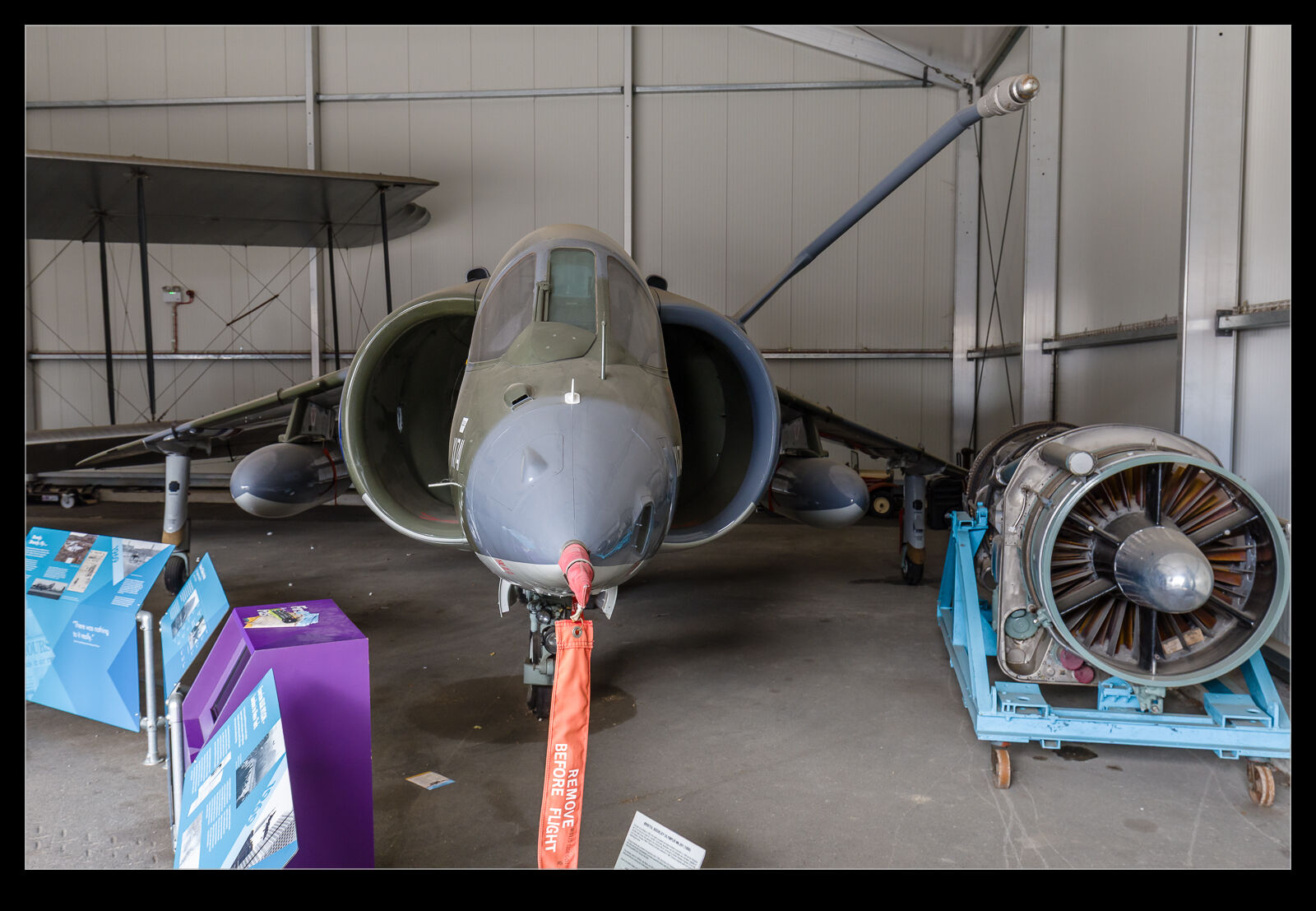 Then there is a Harrier GR1. Unusually it is fitted with the extended wingtips which provided a little extra fuel and a slight reduction in drag. The reason the plane is fitted with them is that it is one of the airframes that took place in the Transatlantic Air Race and won. It is surrounded by some displays of the race and the competitors it defeated – most importantly the Royal Navy!
Then there is a Harrier GR1. Unusually it is fitted with the extended wingtips which provided a little extra fuel and a slight reduction in drag. The reason the plane is fitted with them is that it is one of the airframes that took place in the Transatlantic Air Race and won. It is surrounded by some displays of the race and the competitors it defeated – most importantly the Royal Navy!
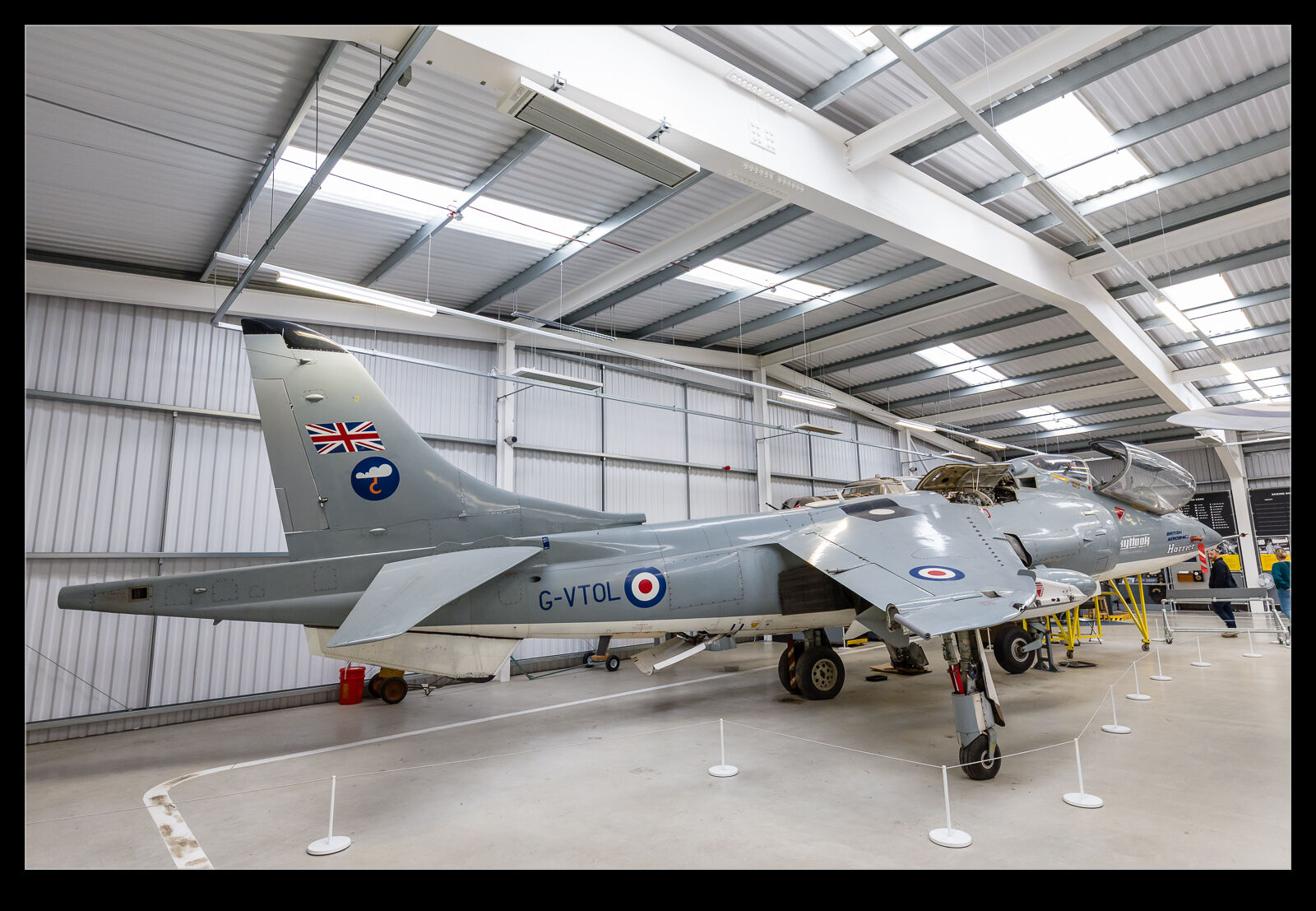 Last but by no means least is a two-seater, G-VTOL/ZA250. This was a company funded demonstrator and was a regular sight at air shows throughout the 80s. It undertook sales campaigns with various countries and undertook trials of things like the ski jump take off and the Skyhook concept. It seemed to be in a different paint scheme every time I ever saw it on TV. Sure, no Sea Harrier or Harrier II but this is quite a collection to have in one place.
Last but by no means least is a two-seater, G-VTOL/ZA250. This was a company funded demonstrator and was a regular sight at air shows throughout the 80s. It undertook sales campaigns with various countries and undertook trials of things like the ski jump take off and the Skyhook concept. It seemed to be in a different paint scheme every time I ever saw it on TV. Sure, no Sea Harrier or Harrier II but this is quite a collection to have in one place.
A Hawk With Many Guises
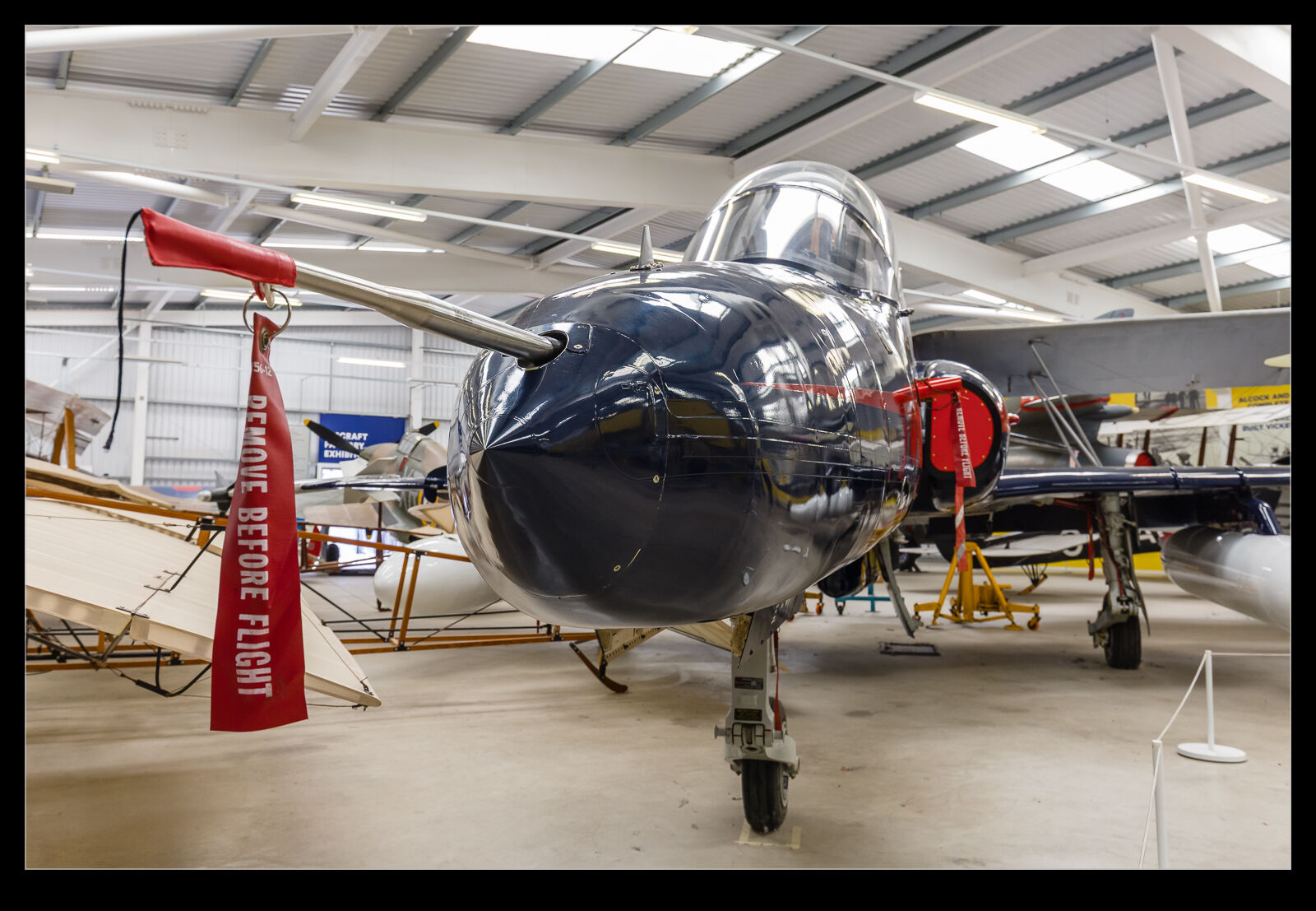 In the days when the old Hawker plant at Kingston/Dunsfold was still around, products like the Harrier and Hawk were generating plenty of revenue and opportunities. The company would build its own demonstrators for use outside the scope of the core client – the RAF. A Hawk airframe was company funded and it was registered G-HAWK. It was originally built as a 60 Series jet before having modifications to reflect the airframe shape of the 100 Series. It also had a COMA serial of ZA101 added at some point.
In the days when the old Hawker plant at Kingston/Dunsfold was still around, products like the Harrier and Hawk were generating plenty of revenue and opportunities. The company would build its own demonstrators for use outside the scope of the core client – the RAF. A Hawk airframe was company funded and it was registered G-HAWK. It was originally built as a 60 Series jet before having modifications to reflect the airframe shape of the 100 Series. It also had a COMA serial of ZA101 added at some point.
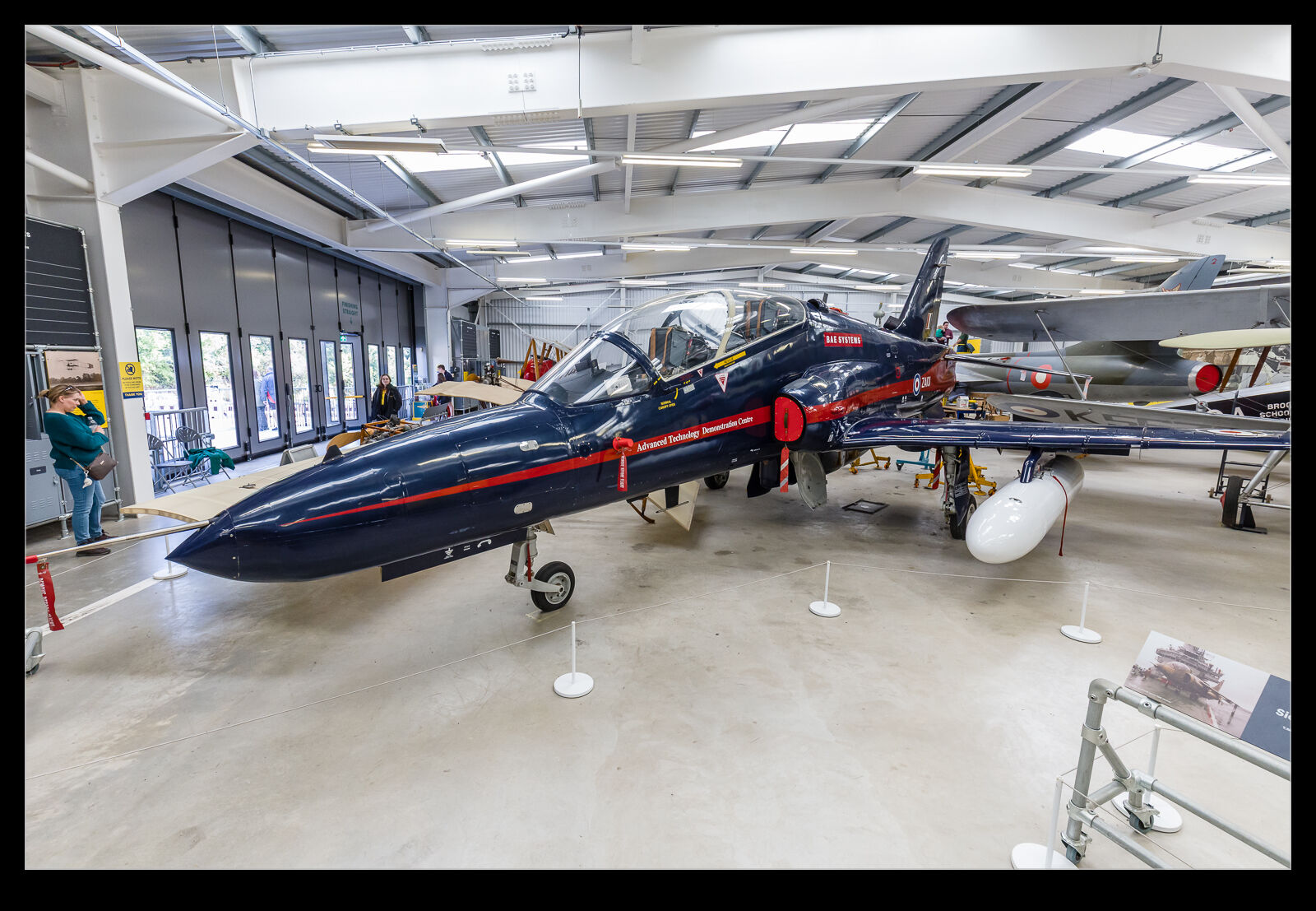 This aircraft moved to Warton when Dunsfold closed and continued to be used for all sorts of development work. I was long gone from Warton by the time its use ended. I was, therefore, pretty pleased to see it again at the Brooklands Museum. It is in the BAe house colours, but the nose is not a shape I recognise. I guess it did something interesting that needed another nose to be grafted on. I photographed this jet at various times over the years (although very little when I worked at Warton and could have seen it frequently!).
This aircraft moved to Warton when Dunsfold closed and continued to be used for all sorts of development work. I was long gone from Warton by the time its use ended. I was, therefore, pretty pleased to see it again at the Brooklands Museum. It is in the BAe house colours, but the nose is not a shape I recognise. I guess it did something interesting that needed another nose to be grafted on. I photographed this jet at various times over the years (although very little when I worked at Warton and could have seen it frequently!).
An E-3F For the First Time for Me
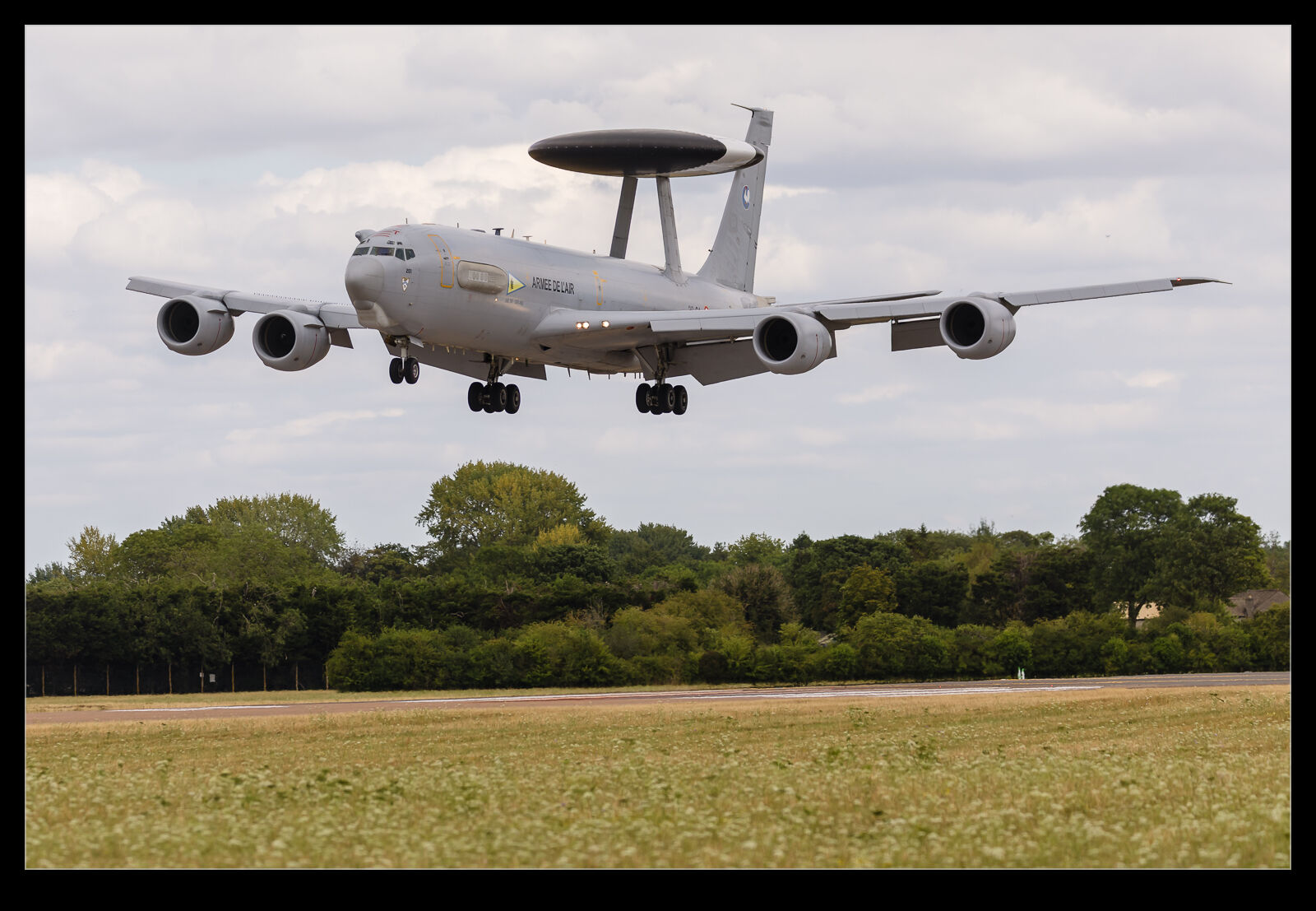 The early 90s had both the RAF and the French Air Force buying new airborne early warning aircraft in the form of the E-3. Unlike the USAF and NATO jets, these included the upgrade to the CFM56 engines which improved endurance and performance. I saw the RAF’s jets on many occasions but never encountered a French jet until this year – after the RAF jets have been retired and not long before the French ones follow suit. I’m not sure how much longer they have but seeing one arriving and departing the show was a nice result. I was pretty happy that I happened to be at the arrival end when it came in which was a bonus.
The early 90s had both the RAF and the French Air Force buying new airborne early warning aircraft in the form of the E-3. Unlike the USAF and NATO jets, these included the upgrade to the CFM56 engines which improved endurance and performance. I saw the RAF’s jets on many occasions but never encountered a French jet until this year – after the RAF jets have been retired and not long before the French ones follow suit. I’m not sure how much longer they have but seeing one arriving and departing the show was a nice result. I was pretty happy that I happened to be at the arrival end when it came in which was a bonus.

